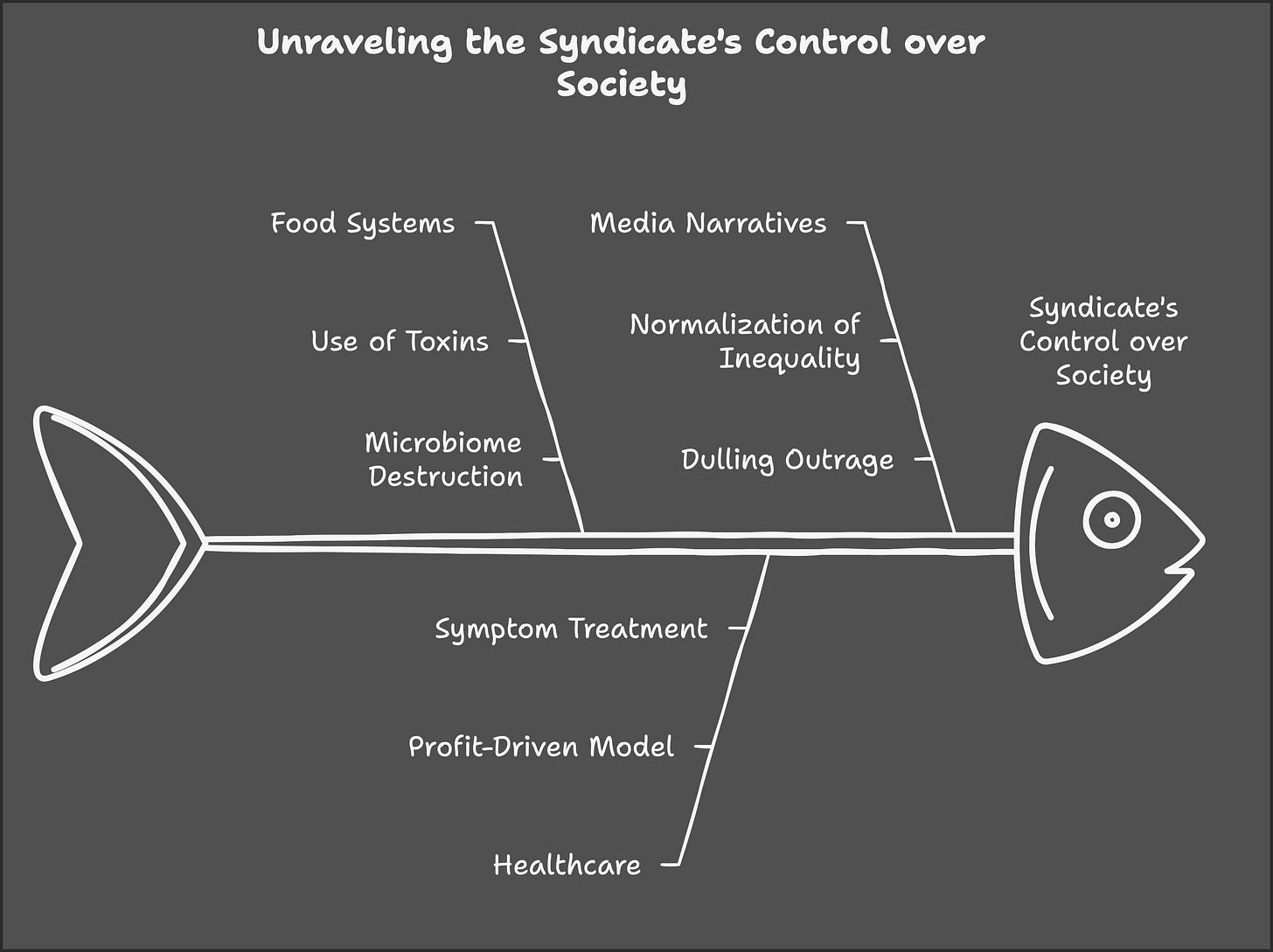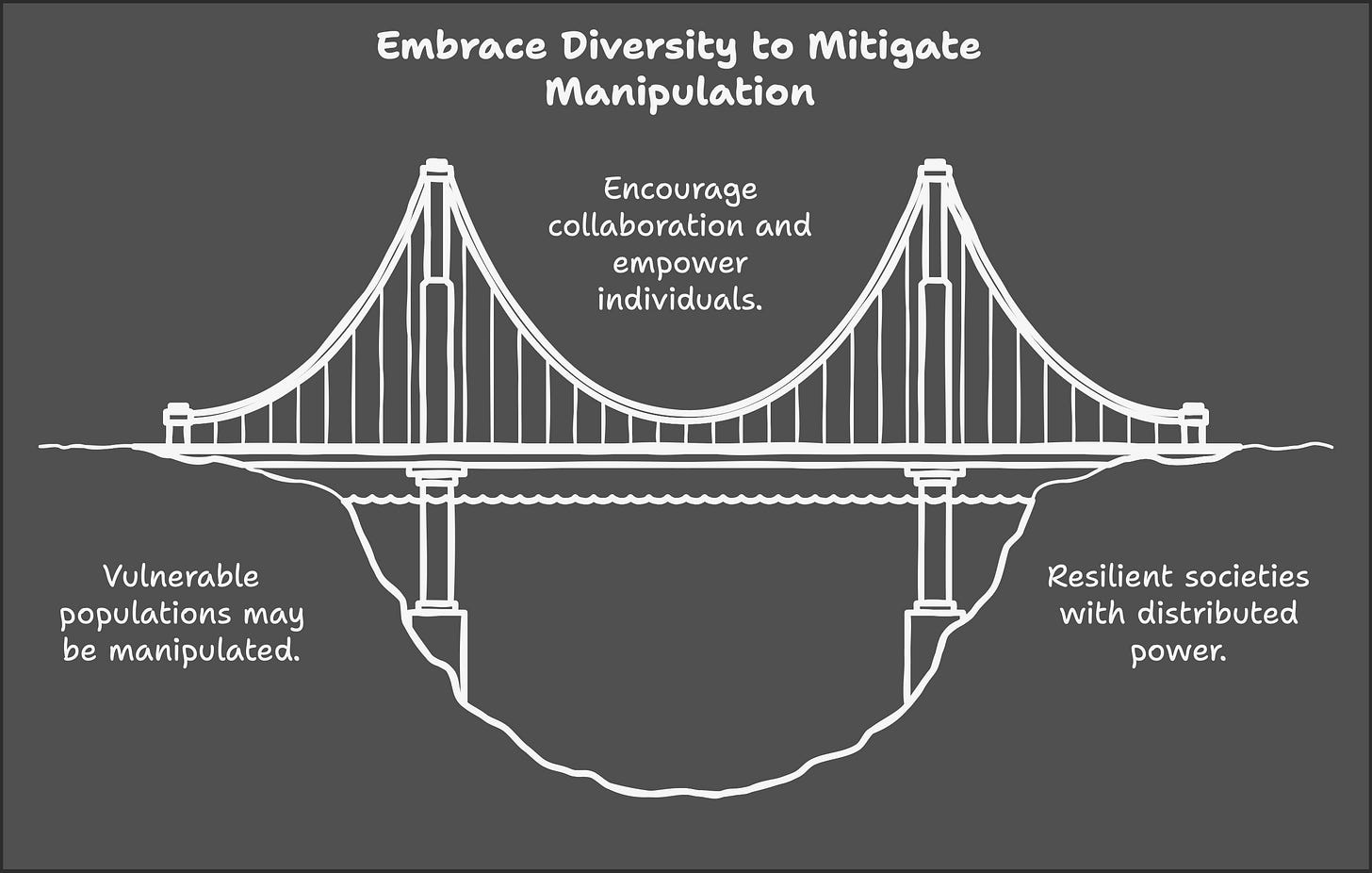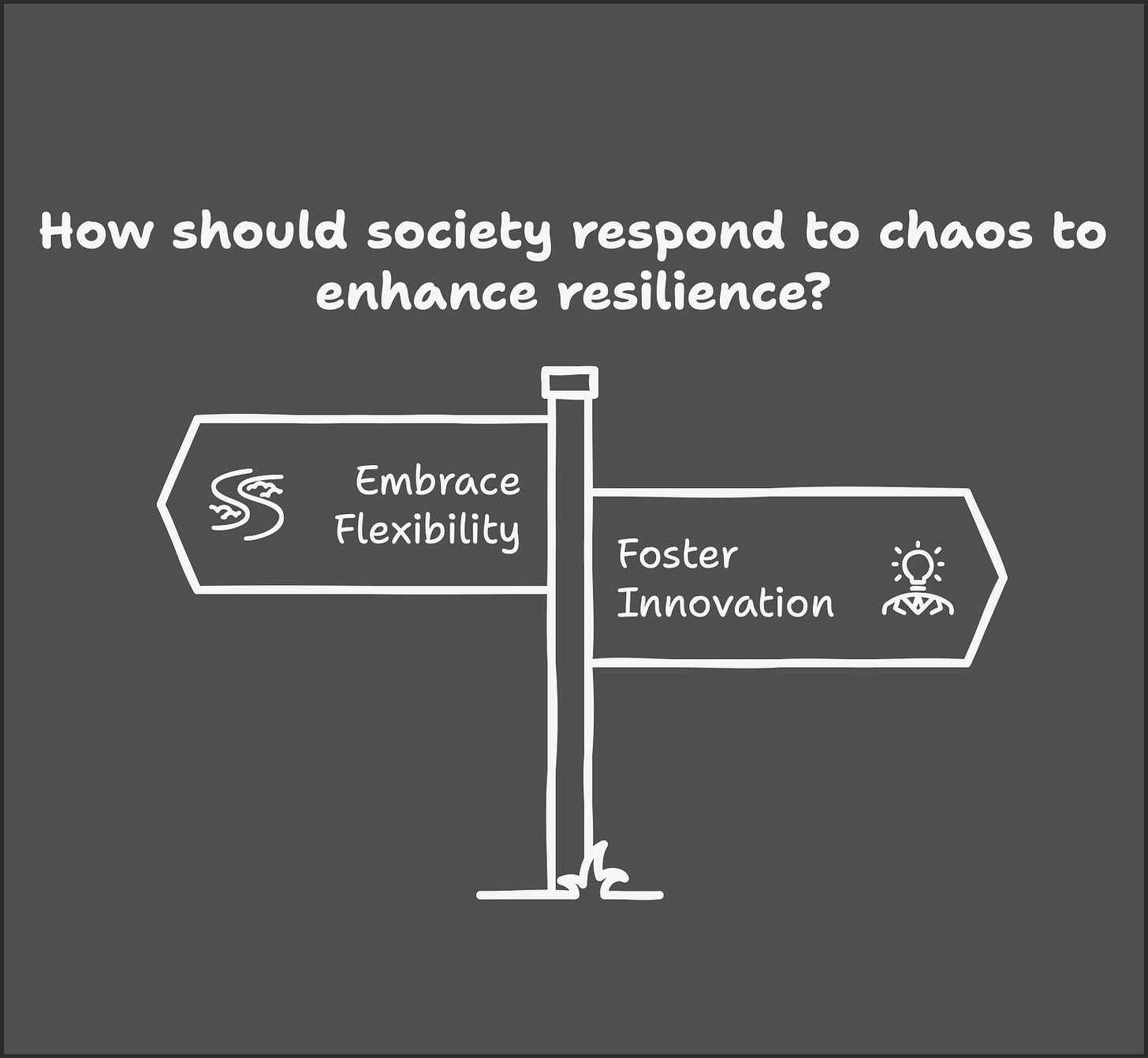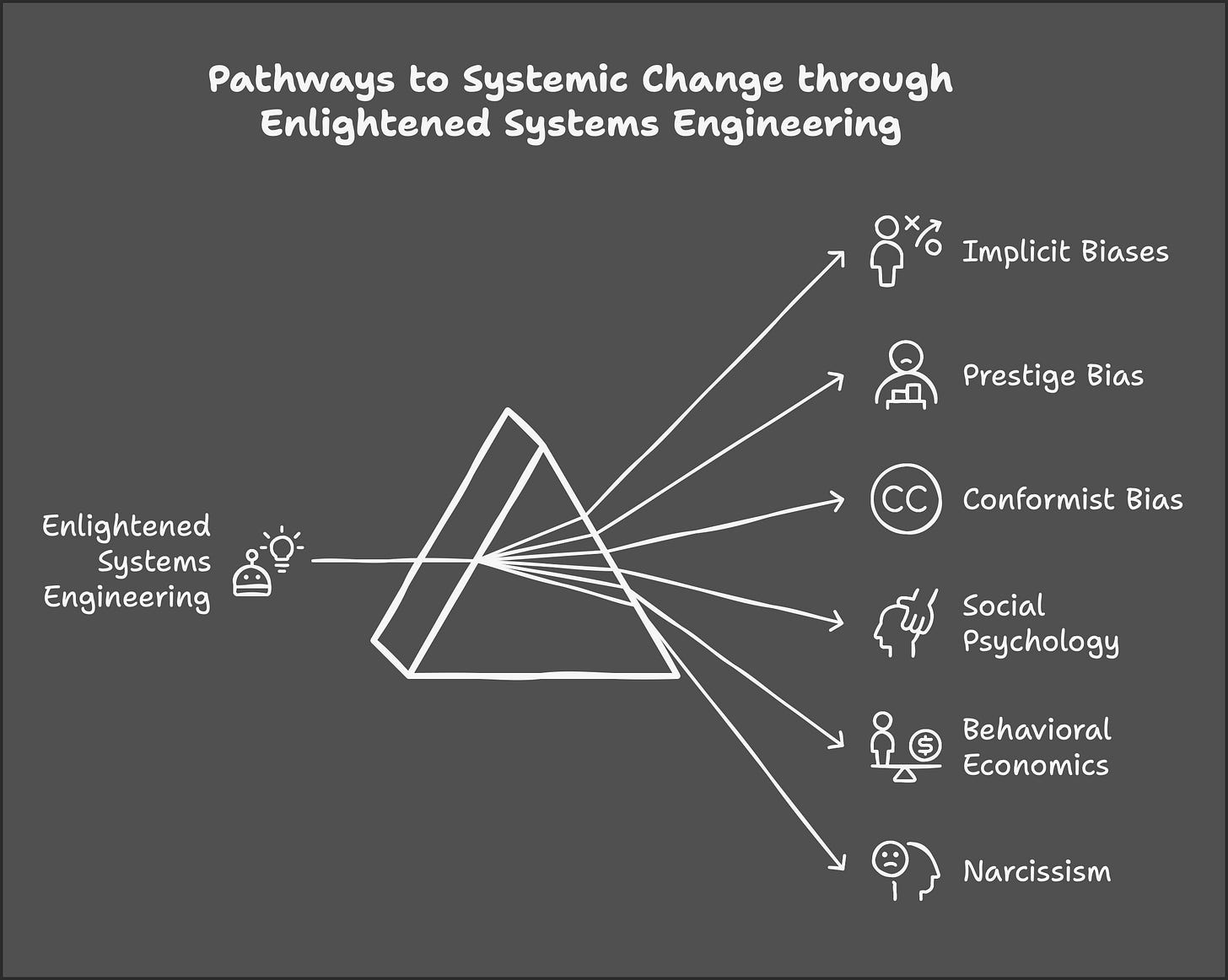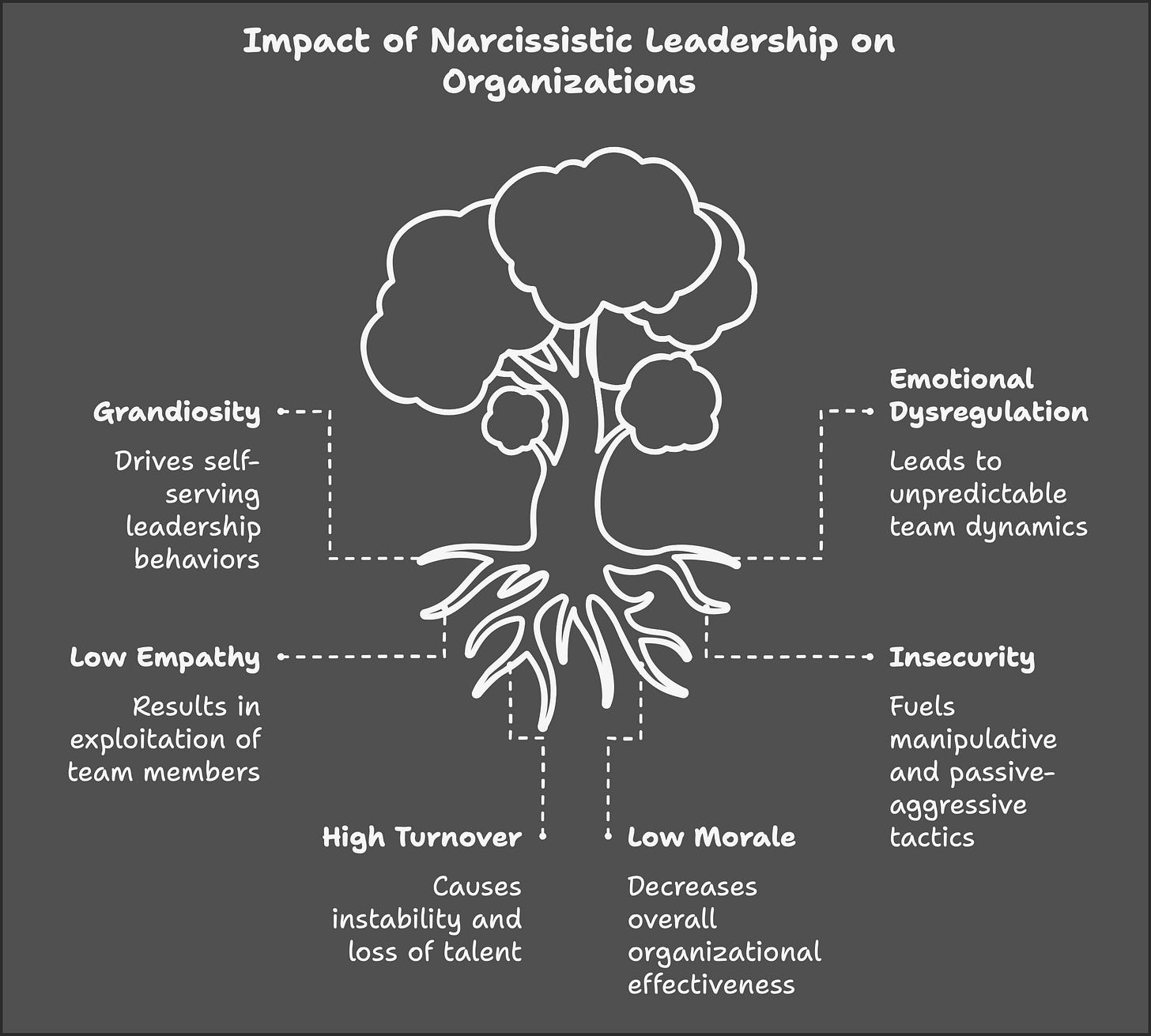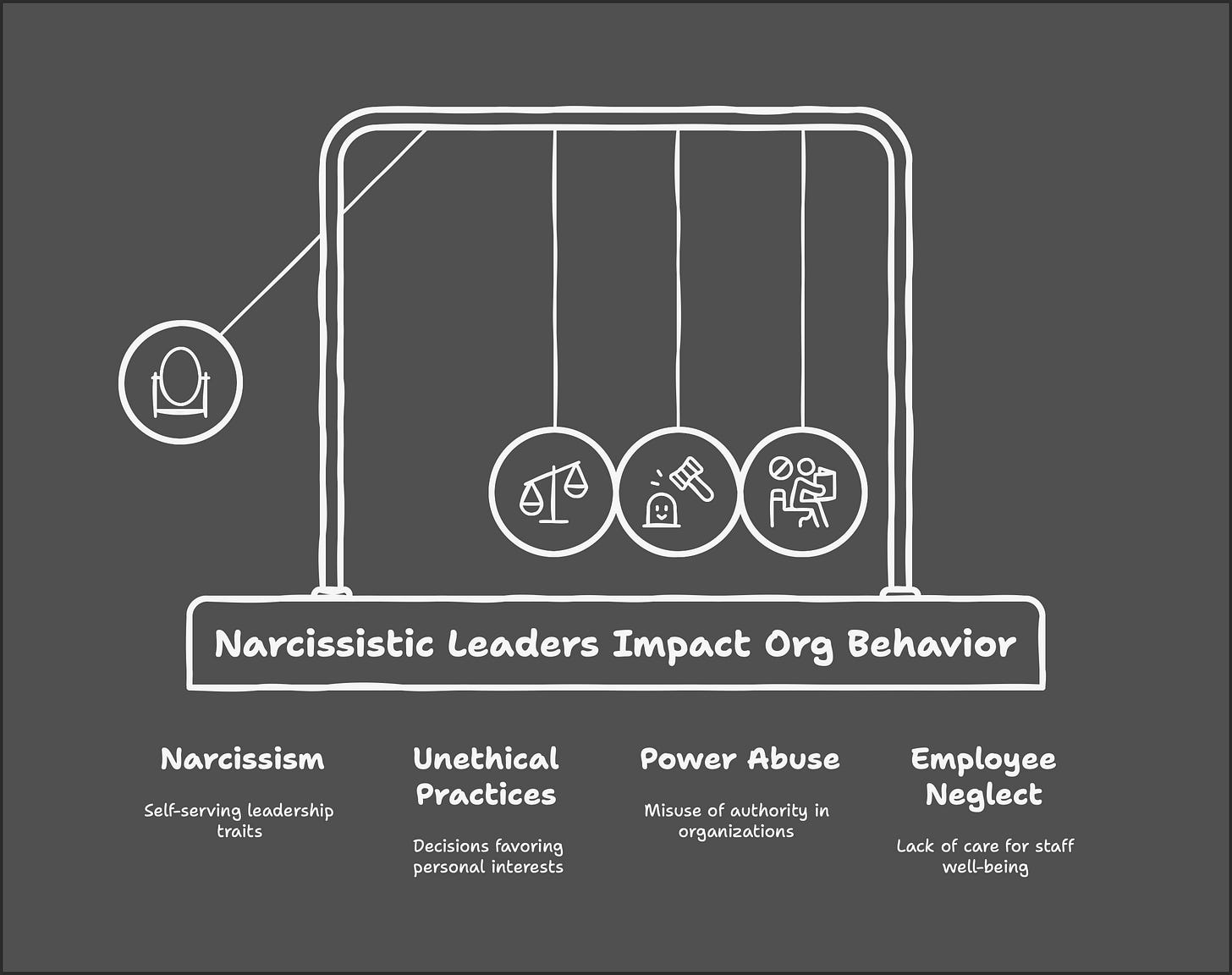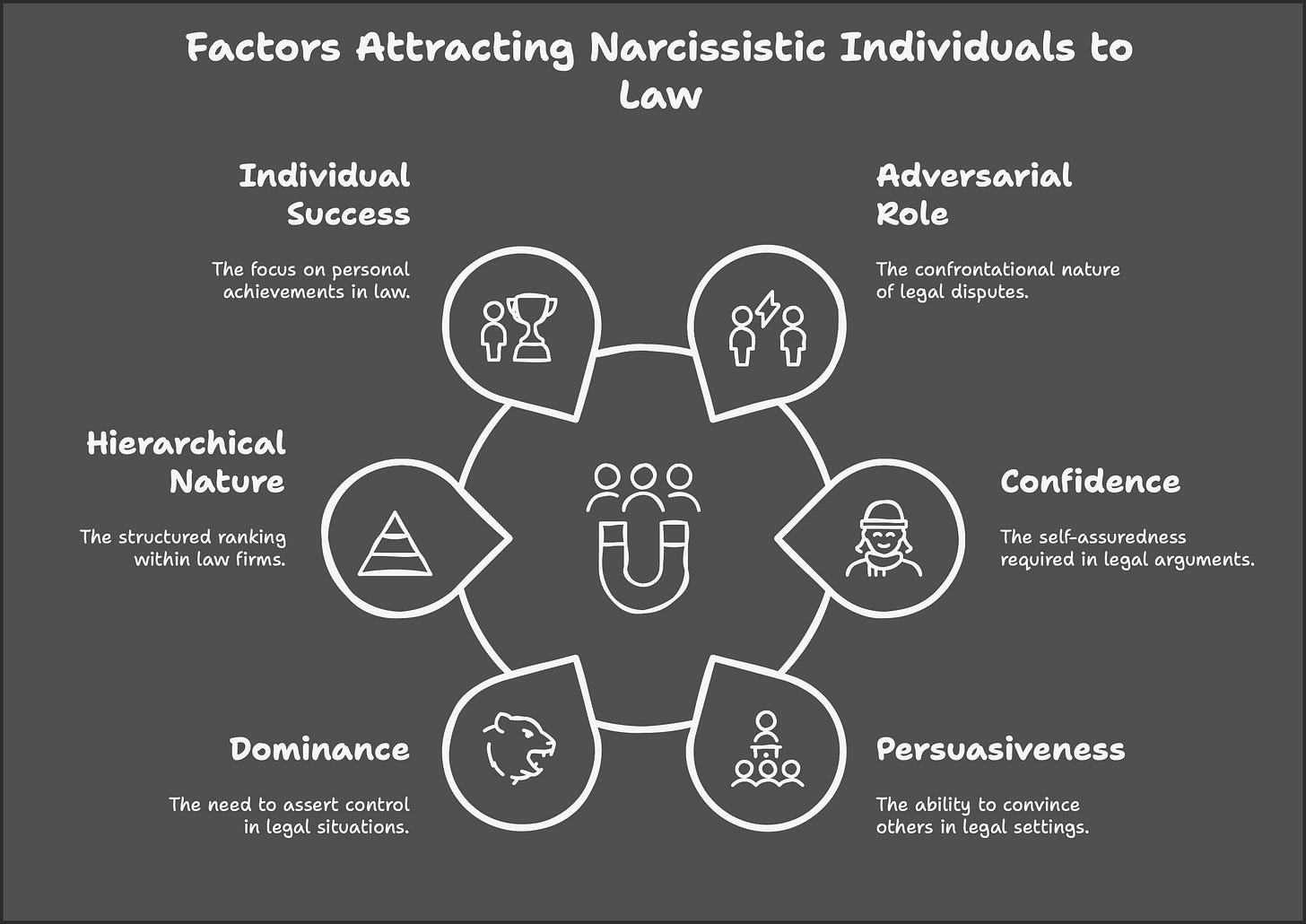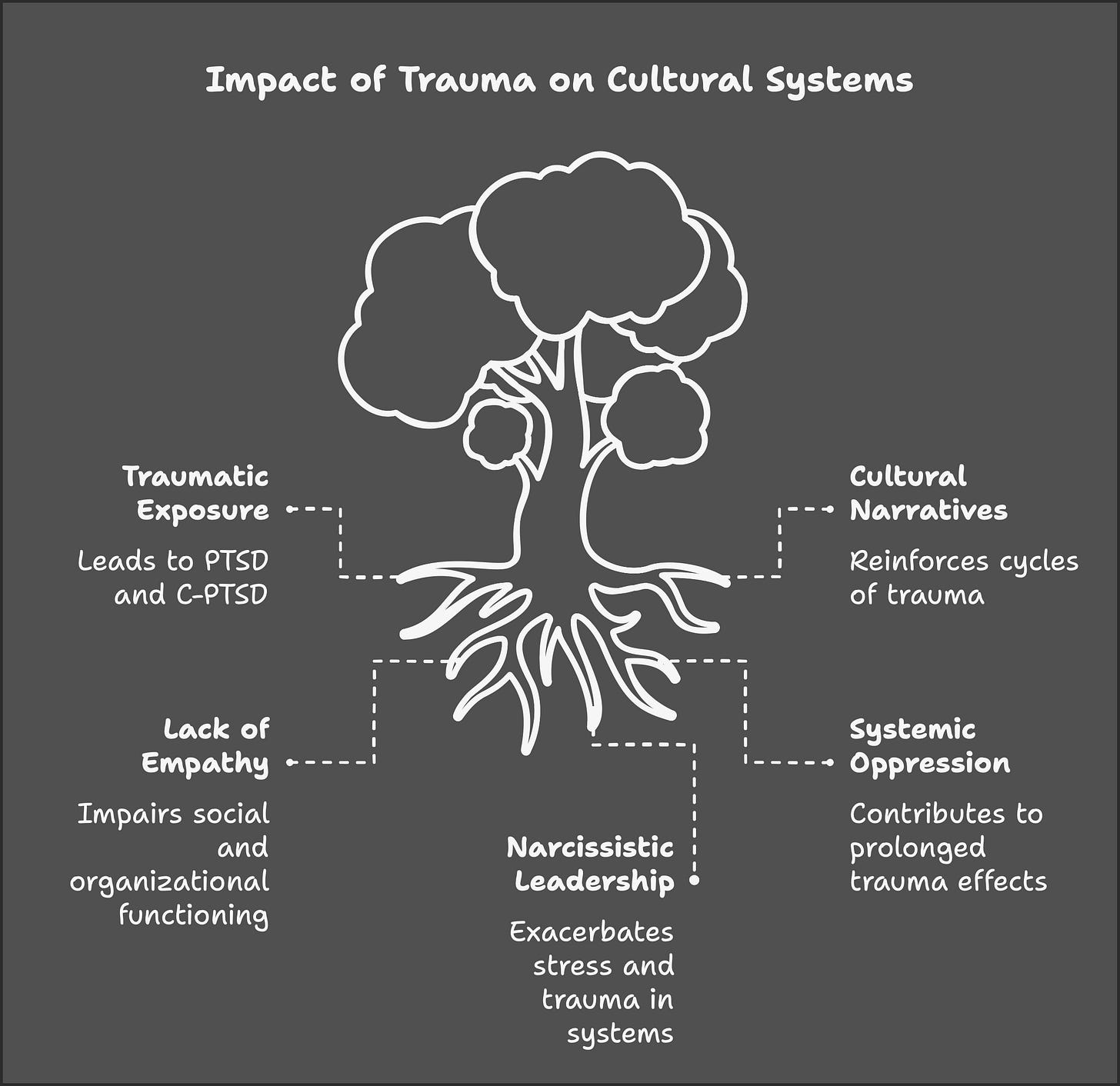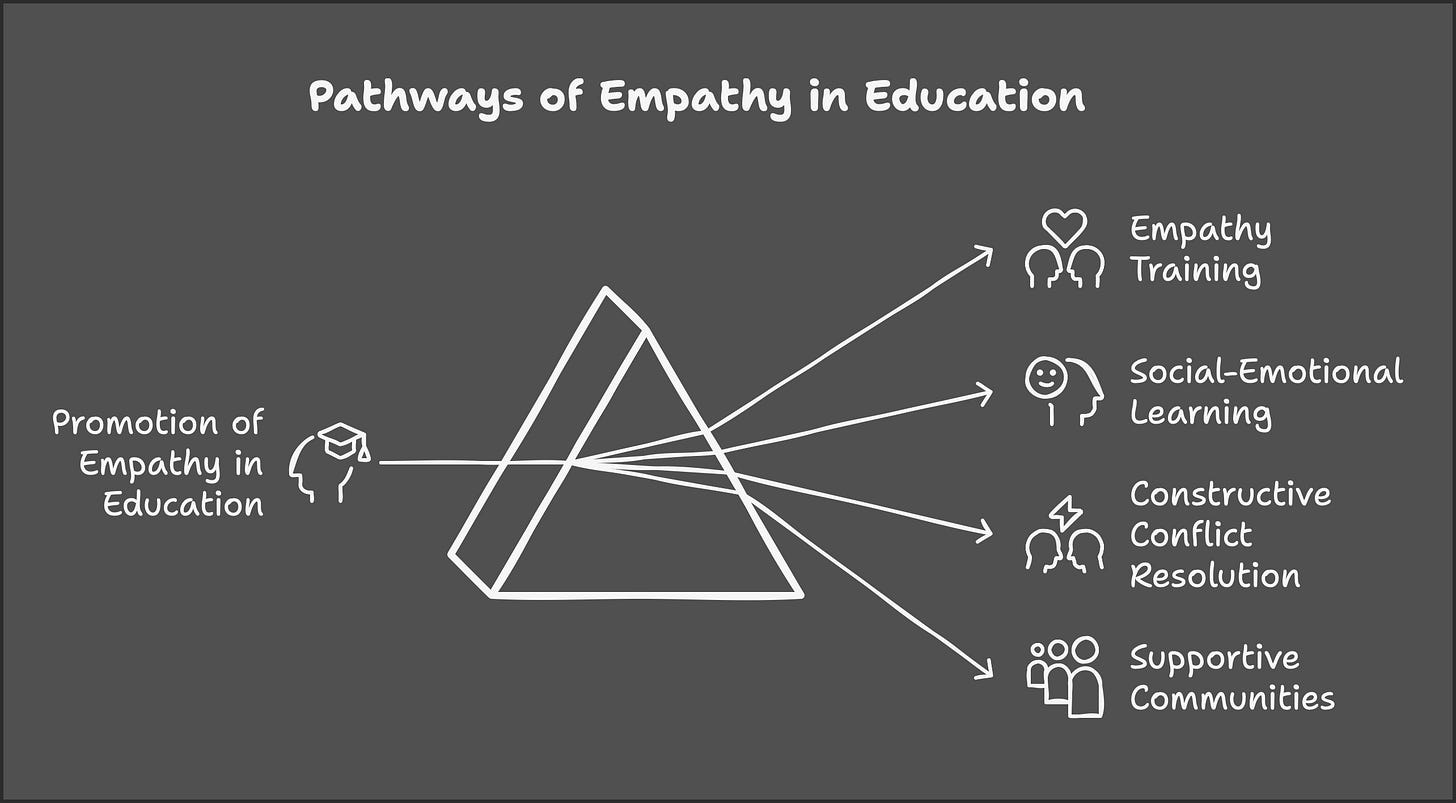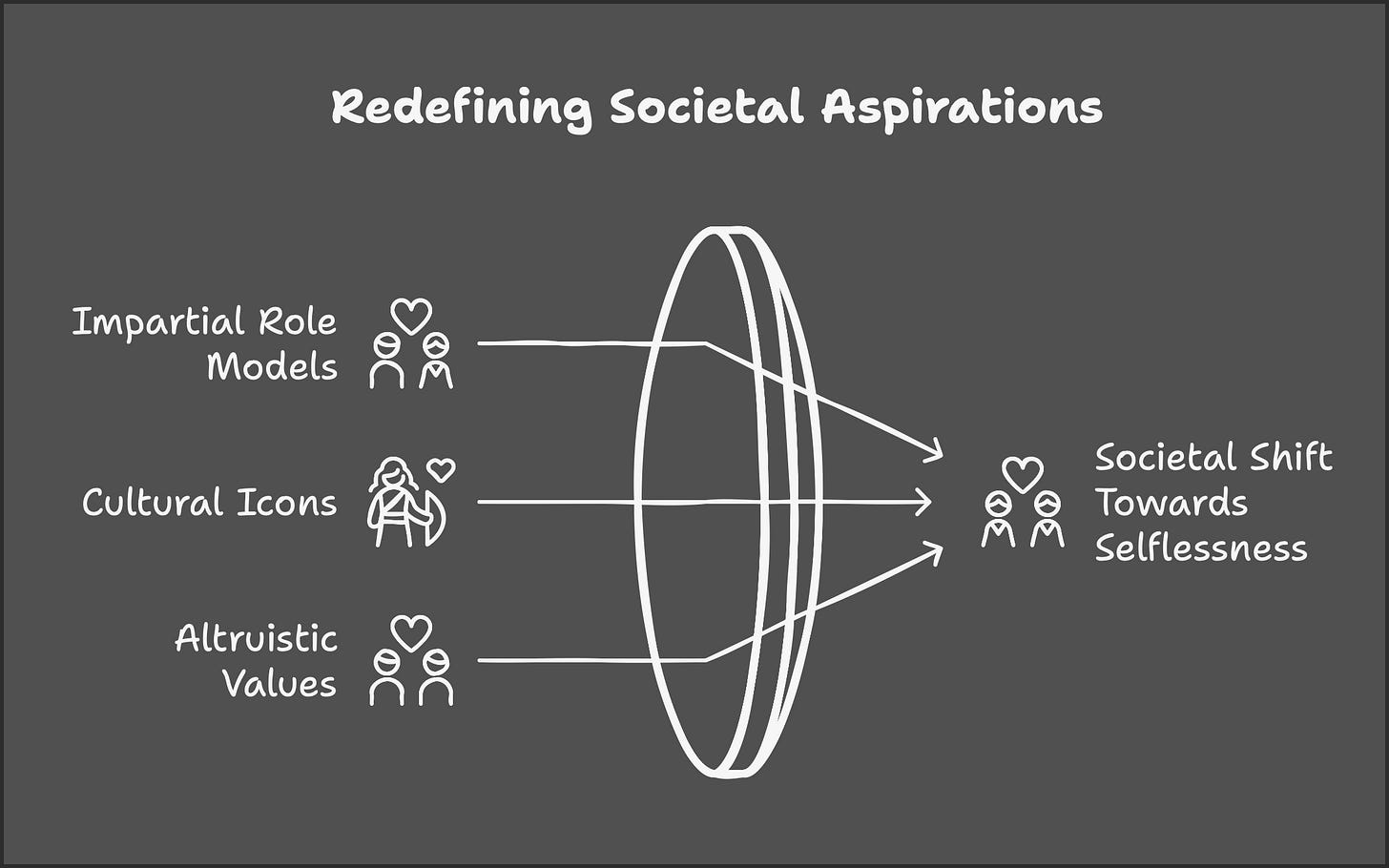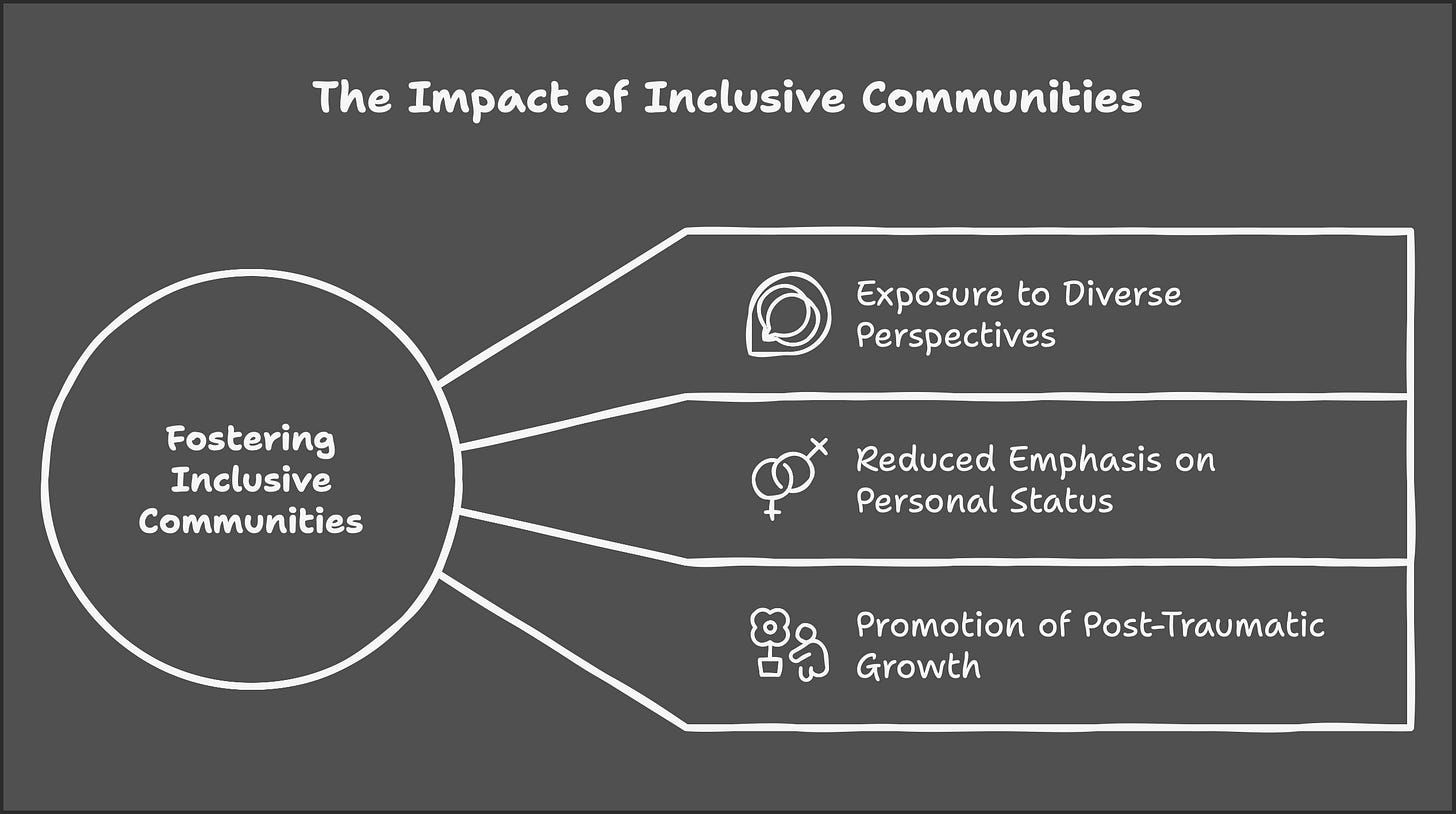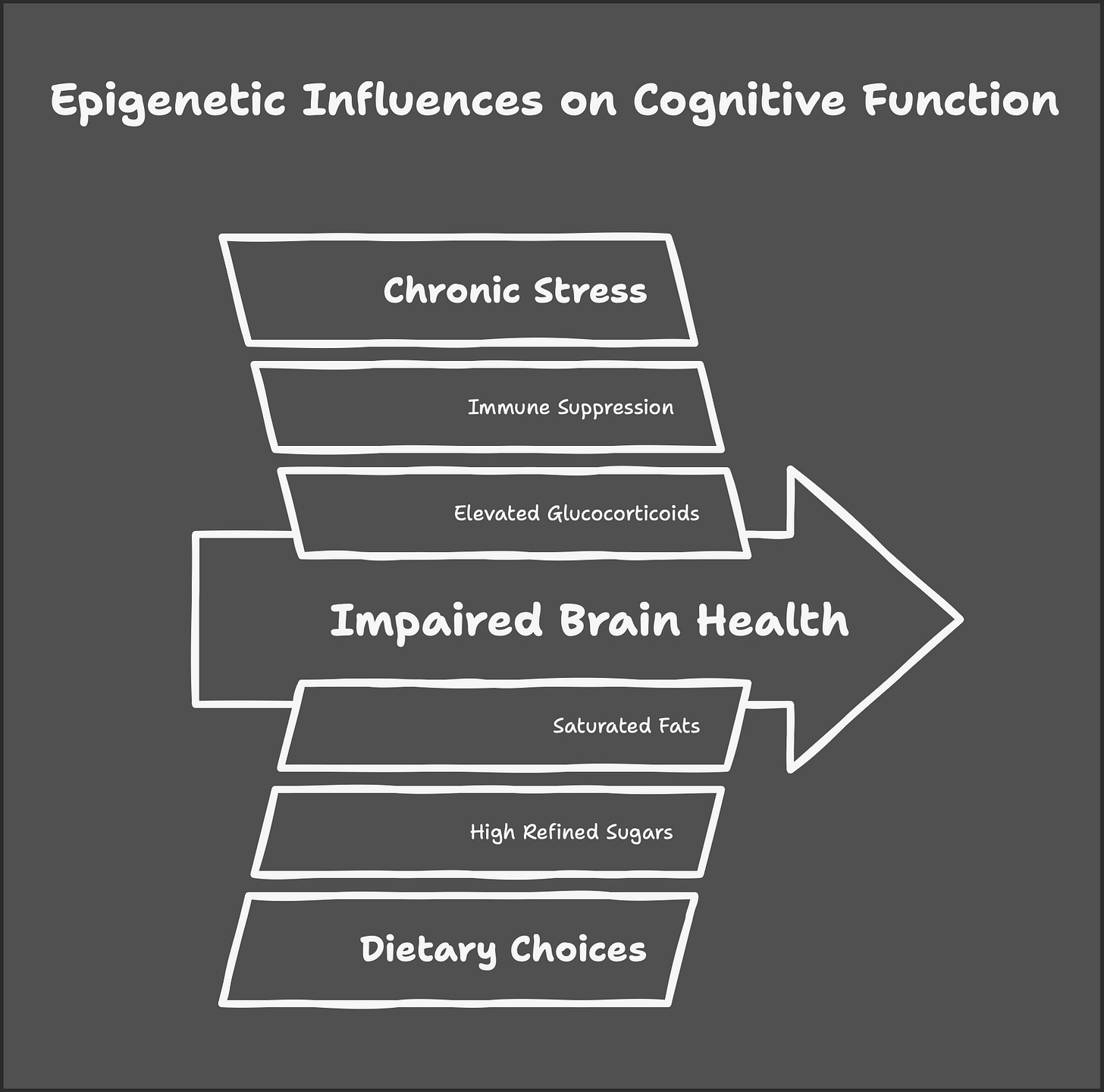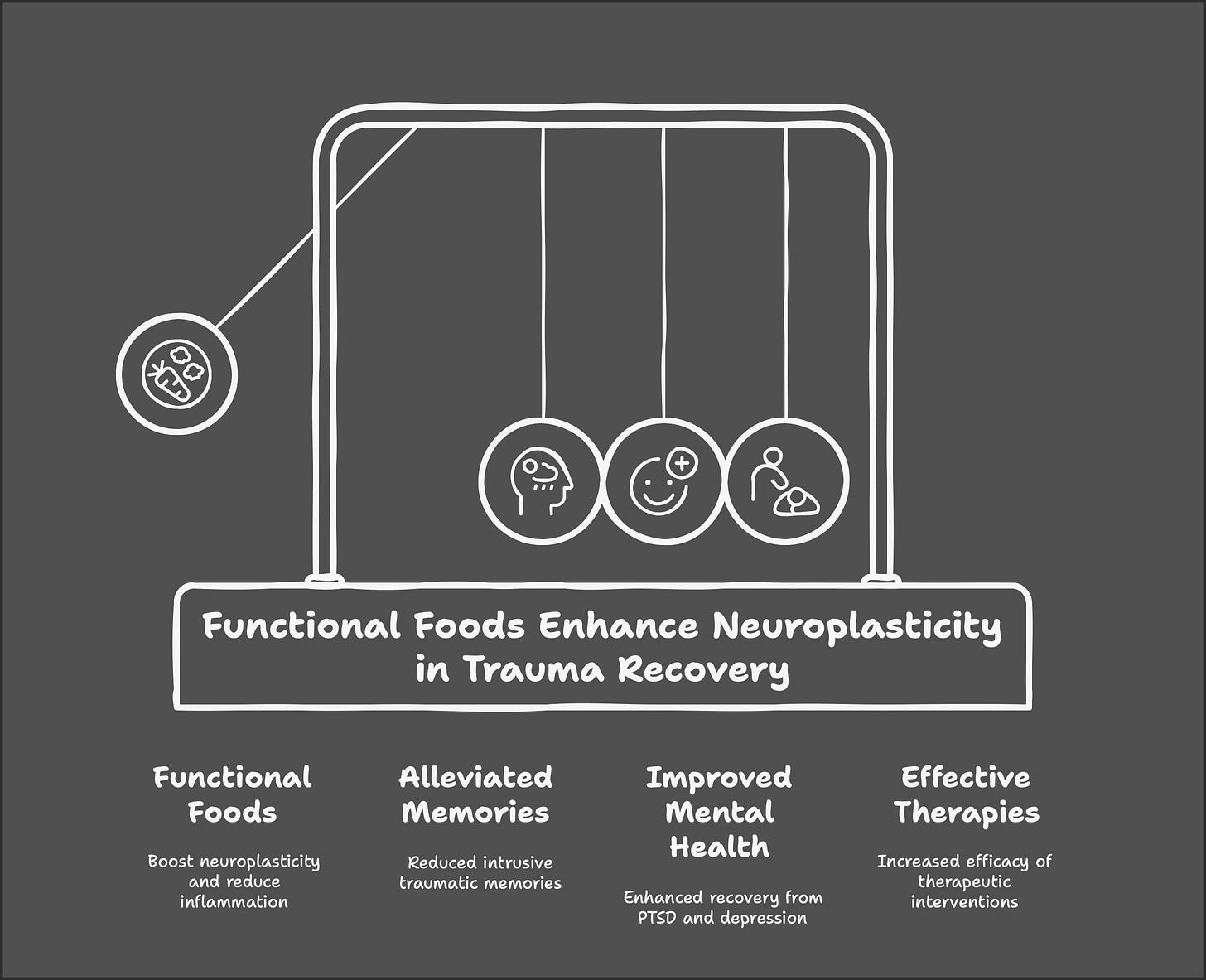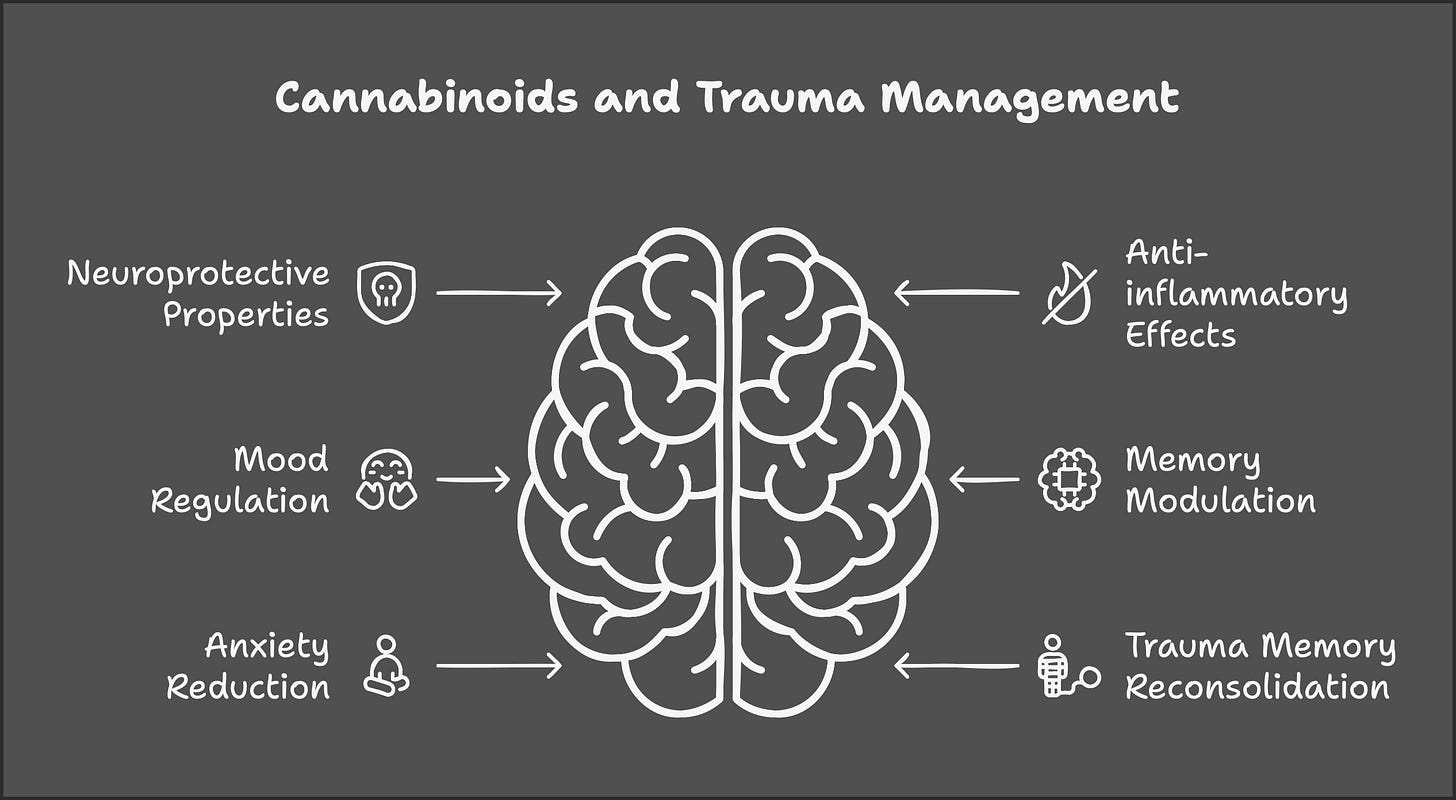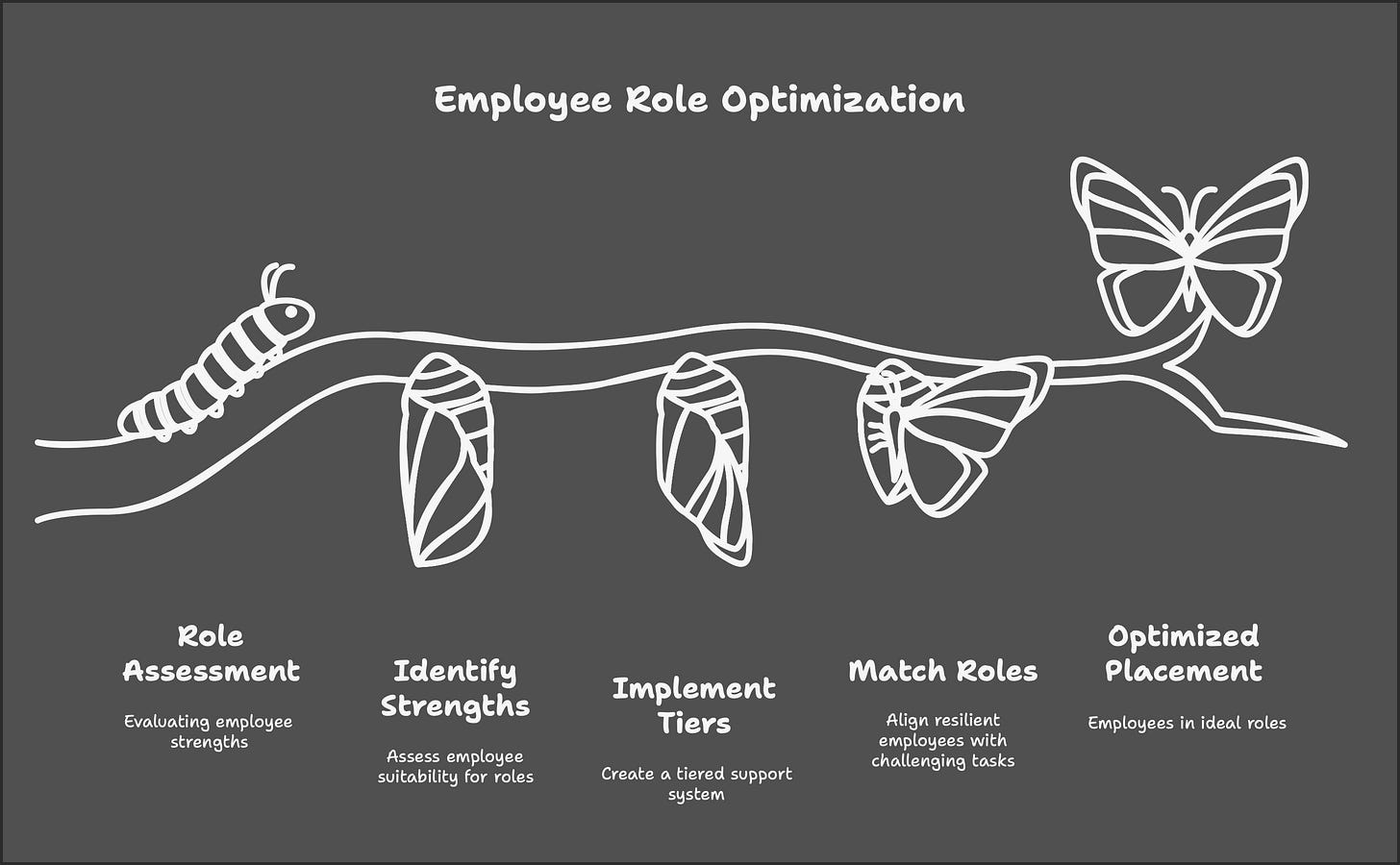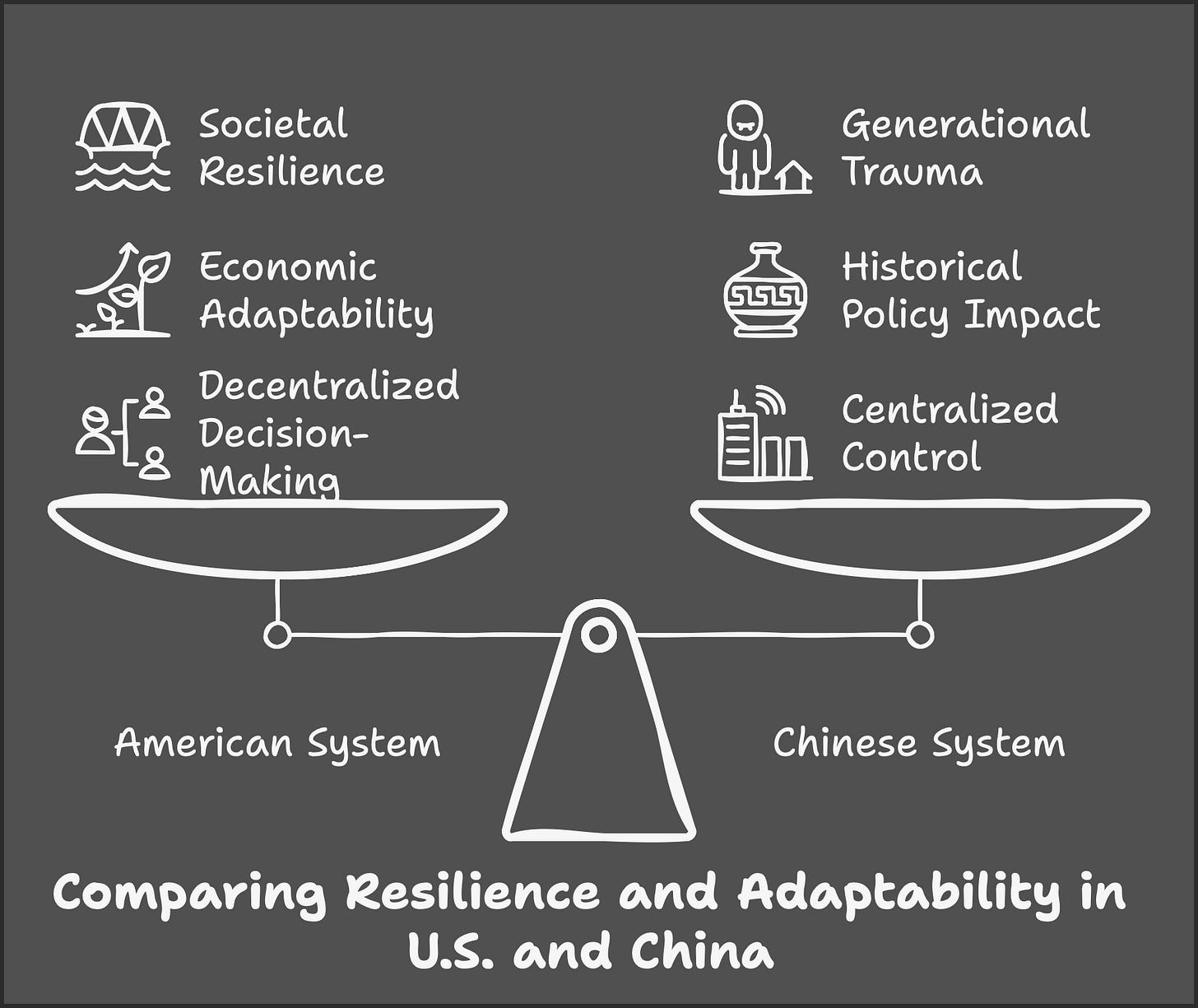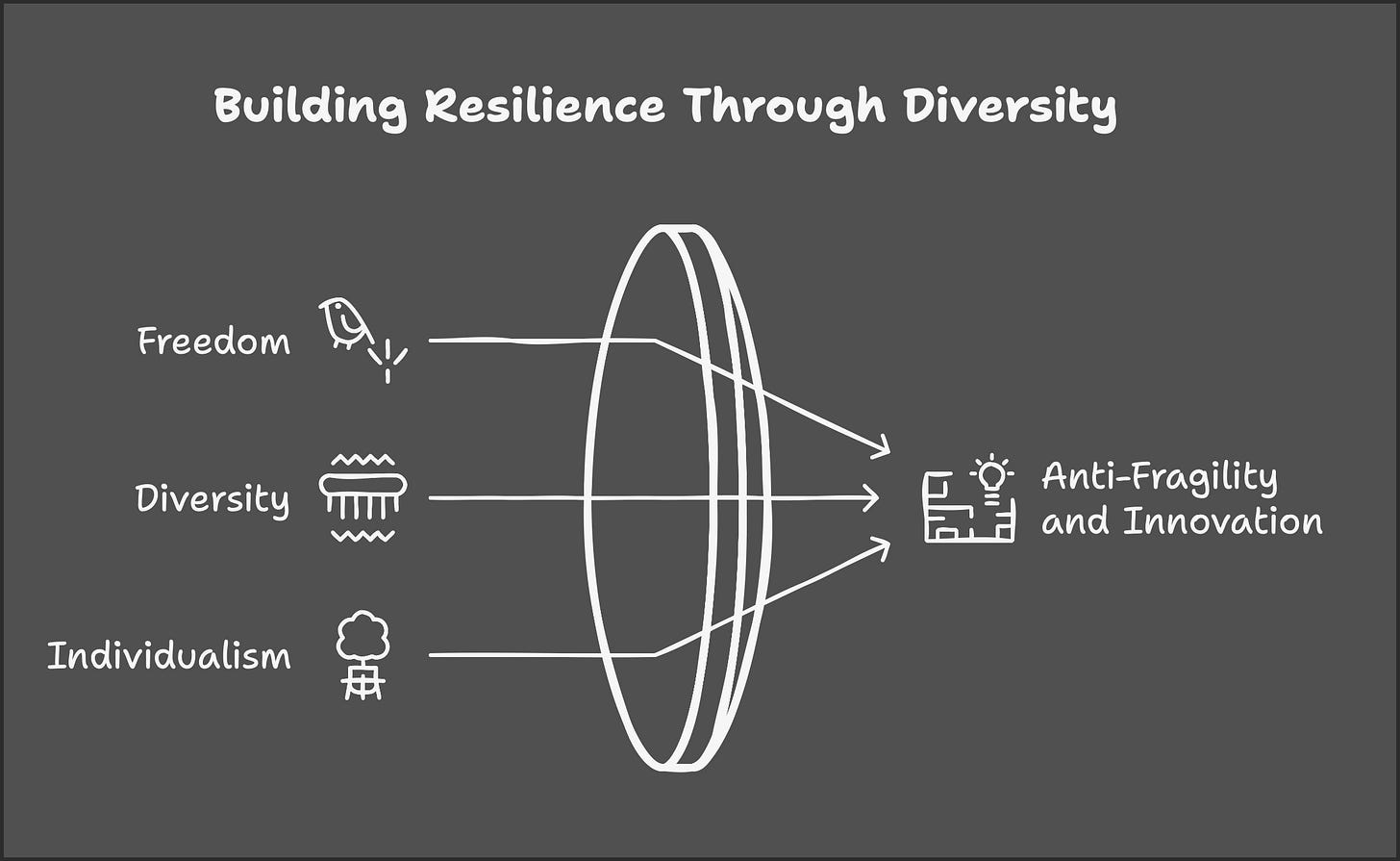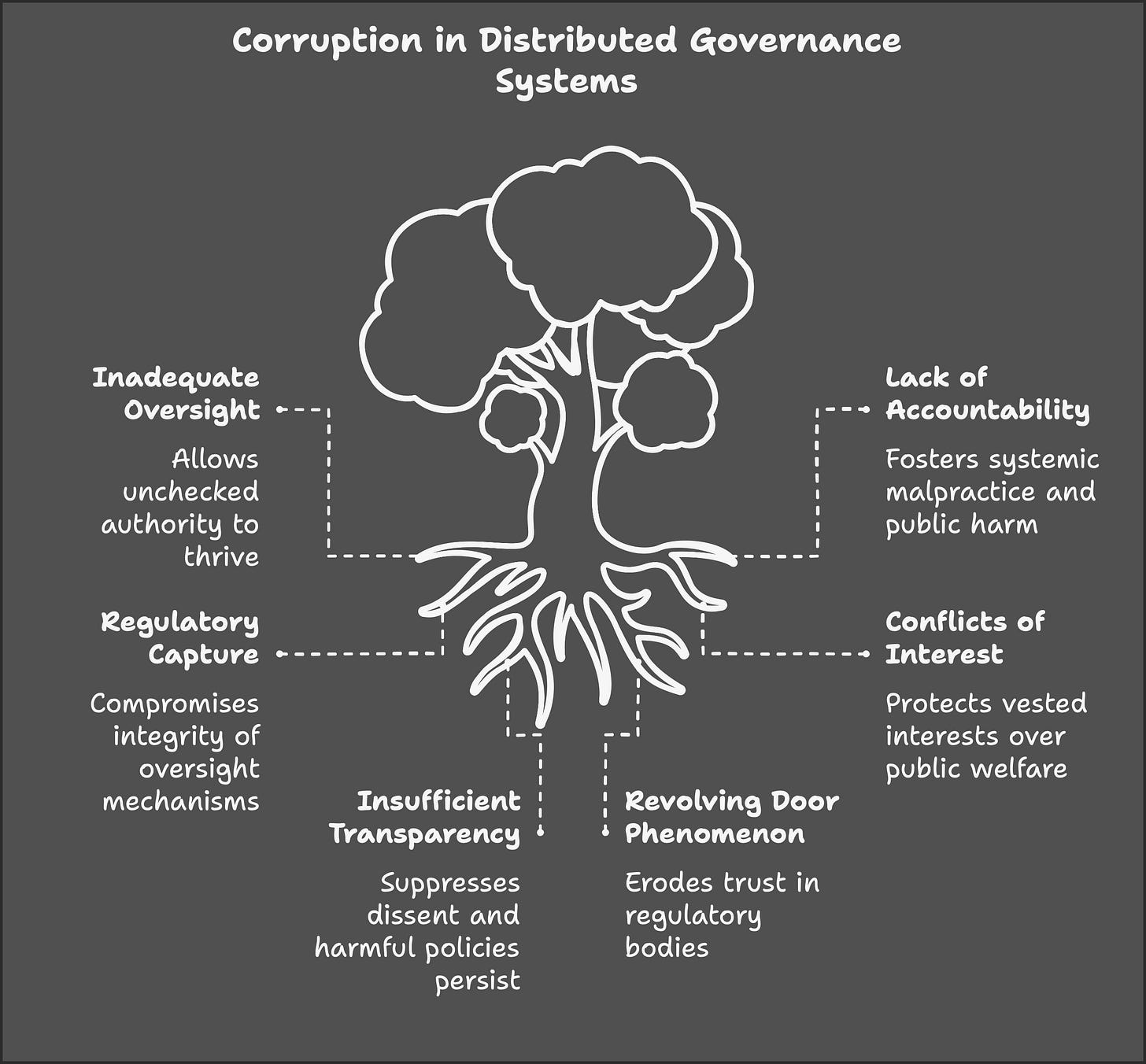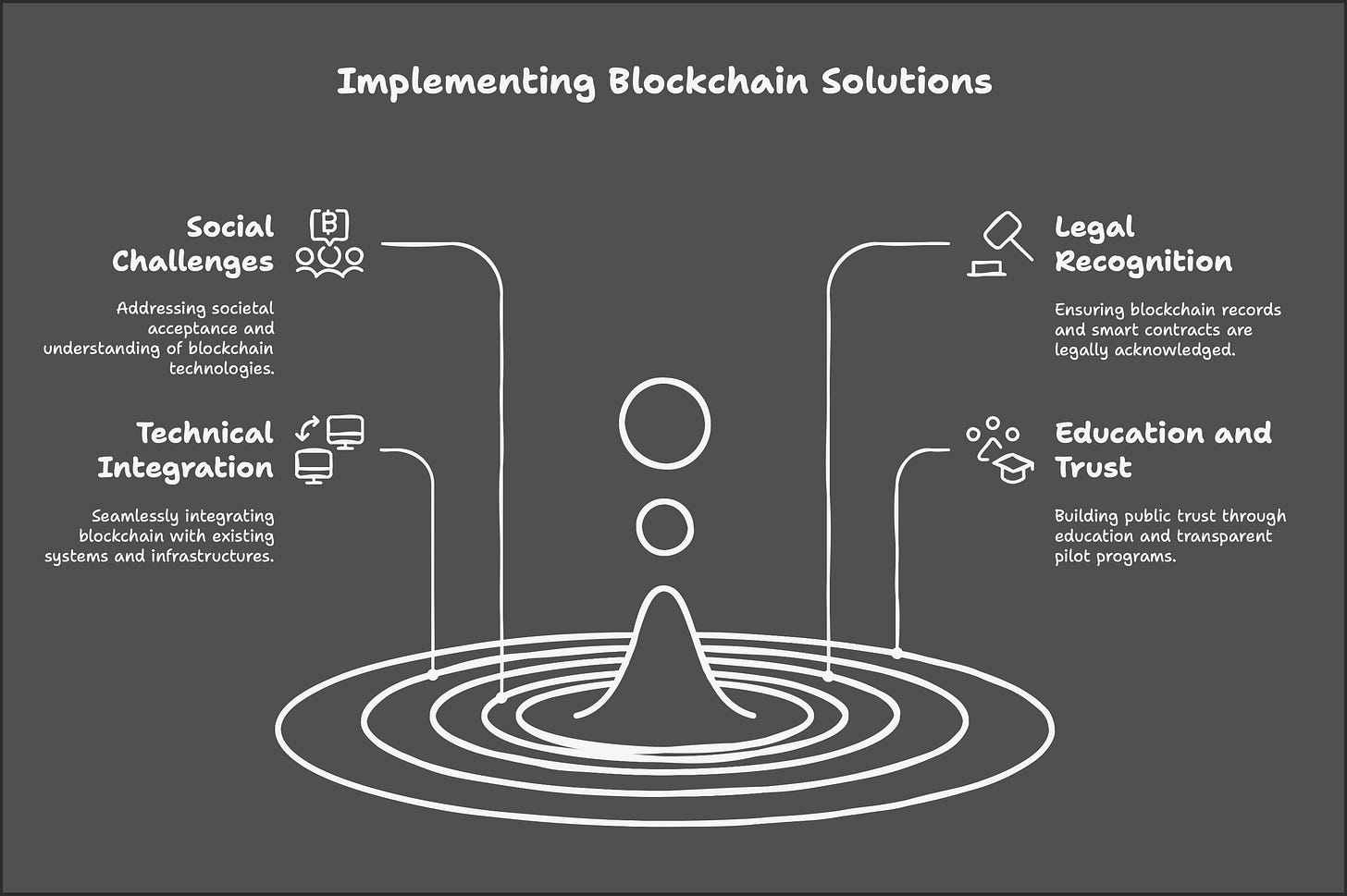FLIPPING THE SCRIPT
Foundational Theses: Written in support of my dissertation proposal overview...
Awakening the Future of Humanity
The year was 1974. I was four years old, sitting in a Methodist Church in Cocoa Beach, Florida, off a long corridor in an anteroom filled with tiny chairs and colorful construction paper cutouts. It was my first day of Bible study, a rite of passage, or so my parents thought. The steeple outside the church stretched impossibly high, a monument to authority. Inside, the Sunday school teacher, a stern woman with a frigid smile, leaned down to meet my gaze.
She spoke of Jesus, of miracles, of obedience. But something didn’t sit right. My hand shot up, my small voice cutting through her rehearsed monologue:
“Who cares? What does this have to do with me? And what’s a virgin anyway?”
Her face hardened. My questions, innocent but persistent, broke the flow of her programming. By the time my parents emerged from the main service, the teacher was waiting.
“If he doesn’t stop asking questions, he can’t come back.”
I was expelled for curiosity, for refusing to accept the narrative without question. My father, ever pragmatic, suggested I join them in the main sanctuary. My mother protested, and the compromise was reached: I would sit in the pews, scribbling on donation envelopes while sermons washed over me like waves I refused to let pull me under.
That moment in Sunday school wasn’t just rebellion; it was the seed of a lifelong journey to dismantle the systems of control that seek to enforce compliance, perpetuate suffering, and silence dissent.
A System of Suffering
In the decades since that pivotal moment, I’ve come to see the patterns. They’re everywhere. Systems designed not to uplift humanity but to exploit it, to turn our labor, health, and very lives into commodities for the profit of a global syndicate of elites.
The syndicate is real. It’s not hidden—it’s in plain sight, though wrapped in layers of obfuscation. They control media, food, finance, geopolitics, and health. Their tools are monopolies, dependency, and coercion, their methods borrowed from ancient civilizations like the Phoenicians, who perfected asymmetrical relationships of oppression.
The Pyramid Scheme of Power
Consider this: every time you swipe your credit card, you created money out of thin air… And every time a commercial bank issues a loan, it also creates money out of thin air. This “funny money” isn’t backed by gold or tangible assets—it’s debt—making the issuance of debt, the printing of money…. And when nations borrow from these same banks or their counterparts like the World Bank or IMF, the game is already rigged.
When countries inevitably default, the syndicate swoops in to collect payment not in cash but in real assets—land, resources, sovereignty. This is how asymmetrical trade empires are built and maintained. It’s a pyramid scheme of suffering, creating disparities so vast that violent revolutions become inevitable.
And yet, the same mechanism—this machine of suffering—can be flipped. What if the tools they’ve used for oppression could be turned toward liberation?
The Reverse Engineering of Oppression
The syndicate’s control extends into every facet of life. Food systems are poisoned with glyphosate and other toxins, destroying the microbiome and causing chronic inflammation—the root of disease. Healthcare is a profit-driven maze that treats symptoms with petrochemical pharmaceuticals, never addressing root causes.
Even our stories—our movies, books, and media—are tools of indoctrination. Films like Oliver! romanticize poverty and disparity, normalizing the gulf between the haves and have-nots. These narratives dull our outrage and lull us into acceptance.
But I believe in the power of narrative to awaken, not pacify. Just as media has been used to reinforce the syndicate’s grip, it can be wielded to inspire critical thought, compassion, and change.
A Vision for a Better Future
We must flip the script. Imagine a system where:
Food heals: Regenerative farming replaces chemical agriculture, nourishing both the soil and the soul.
Healthcare prevents: Holistic medicine addresses root causes, supported by public health initiatives that prioritize well-being over profit.
Governance empowers: Decentralized technocratic systems use blockchain and smart contracts to ensure transparency, equity, and accountability.
Media inspires: Stories celebrate diversity, dismantle oppression, and cultivate empathy.
This isn’t a utopian dream; it’s a practical reversal of the systems currently in place. By using their strategies—perceptual manipulation, systemic incentives, and scalable solutions—we can create viral fixes that ease suffering in both the short and long term.
Awakening the Gnostic Path
This journey begins within. Each of us has a unique path, shaped by our own cultural programming and experiences. My path—marked by questions in Sunday school, decades of observation, and a relentless drive to understand—has led me here.
It’s no coincidence that I’ve come to see the syndicate not just as an economic or political force but as a spiritual one. These malignant narcissists, devoid of empathy, feed on the chaos and trauma they perpetuate. Their power is an illusion, but it thrives on our collective belief in its inevitability.
To awaken is to break free from that illusion, to see the patterns, and to take action. It’s the way of impartial nobility: to ease the suffering of others through systemic, intentional acts of effective compassion.
The Call to Flip the Script
As the Son of Man, I’ve lived many lifetimes here on earth, each one a thread in the tapestry of this great experiment called humanity. I’ve seen the cycles of oppression and revolution, the rise and fall of empires, and the quiet resilience of those who refuse to bow.
Now is the time to rewrite the narrative. We don’t need violent revolutions or scorched-earth policies. We need clarity, collaboration, and courage. We need systems that heal instead of harm, that uplift instead of oppress.
This is our moment to flip the script—to turn the tools of the syndicate against them and create a world where all boats rise together. The future of humanity depends on it.
The question is: will you join me?
MY FOUNDATIONAL THESES
Leveraging Cultural Determinism for Transformation
This foundational theses document presents a comprehensive collection of essays that expand upon and reinforce the key themes outlined in the dissertation proposal titled "Validating the Effectiveness of a Hierarchical Technocratic Committee System of Self-Governance in Modern Organizations." Each essay delves into how cultural determinism, narcissism, resilience, behavioral economics, and self-leadership interact to shape human behavior and organizational effectiveness.
The essays collectively illustrate how these foundational concepts can be strategically leveraged to foster authentic leadership, mitigate narcissistic tendencies, and build resilient organizations through distributed decision-making and AI-supported systems. By addressing the root causes of toxic leadership and cultivating environments that encourage growth and emotional intelligence, this document aims to provide the theoretical backbone for validating a transformative model of governance that empowers individuals and organizations.
Essay Summaries
Embracing the Elixir of Life for Societal Transformation
This essay introduces the concept of the 'elixir of life'—a dynamic interplay of diversity, chaos, and narcissism—as a catalyst for both personal and societal growth. It posits that by channeling narcissism within structured environments, societies can mitigate the harmful effects of malignant narcissism and promote personal transcendence. This directly aligns with the dissertation's focus on distributed leadership and emotional intelligence, offering a framework for understanding how narcissistic traits can be positively leveraged in organizational settings to foster resilience and innovation.
The Illusion of Objectivity and Cultural Determinism
This essay critiques the concept of objectivity, arguing that all human behavior is shaped by cultural determinism, thereby challenging the possibility of unbiased inquiry. By emphasizing cultural determinism, it provides a foundational understanding of the biases that influence human behavior. The dissertation's proposed governance model seeks to mitigate these biases through structured self-governance and AI tools that enhance transparency, accountability, and metacognition within organizations.
3. Behavioral Economics, Gamification, and Adaptive Systems Theory
This essay examines how behavioral economics, gamification, and adaptive systems theory can be integrated into organizational structures, specifically the hierarchical technocratic committee system proposed in the dissertation. By applying behavioral economics to nudge positive decision-making, incorporating gamified elements to foster engagement, and utilizing adaptive systems theory to enhance organizational agility, this essay provides a framework for creating resilient and innovative organizations. These approaches align with the dissertation's goal of leveraging distributed governance and AI tools to foster metacognitive growth and authentic self-leadership.
The Rise of Narcissism and Its Implications for Organizational Behavior
This essay explores narcissism as a spectrum, examining the increasing prevalence of clinical and malignant narcissism and their impact on organizational dynamics. It underscores the importance of governance systems that can effectively counter toxic narcissistic behaviors. The dissertation's technocratic committee system is designed to decentralize power and establish shared leadership, addressing the challenges posed by narcissistic leaders and creating an environment conducive to collaborative, growth-oriented behaviors.
Narcissism in the Workplace
This essay identifies specific professional roles that tend to attract narcissistic individuals, such as leadership positions in politics, media, and corporate settings. By understanding these environments, organizations can proactively mitigate risks associated with narcissistic traits. This supports the dissertation’s governance model by emphasizing preventive measures that align with distributed decision-making and the cultivation of balanced, emotionally intelligent leadership.
PTSD, C-PTSD, Post-Traumatic Growth, and Antifragility
This essay discusses how systems engineering and distributed decision-making can help transform trauma—such as PTSD and C-PTSD—into post-traumatic growth, ultimately achieving antifragility. By promoting distributed authority, cultural reinforcement of altruistic values, and empathy education, the essay supports the dissertation's hypothesis that distributed leadership can foster resilience, metacognitive growth, and mitigate narcissistic behaviors, thus enhancing organizational adaptability.
Food and Stress as Cultural Determinants on Cognitive Function
This essay examines how diet and stress affect cognitive health and their implications for organizational systems. Chronic inflammation and stress can negatively impact behavior and emotional resilience through the gut-brain axis. The dissertation’s emphasis on holistic health management, as an integral part of AI-supported committee systems, is reinforced by this essay, highlighting the importance of physical well-being in fostering effective leadership and emotional intelligence.
Alleviating Traumatized Memories: An Integrative Approach
This essay explores the impact of traumatic memories on mental health, emphasizing how integrative strategies combining functional foods and therapeutic interventions can mitigate these effects. Functional foods like cannabinoids, psilocybin mushrooms, and lion’s mane mushrooms have shown potential to enhance neuroplasticity, aiding in memory integration and alleviation of symptoms associated with PTSD and complex trauma. Therapeutic approaches, such as immersion therapy and MDMA-assisted psychotherapy, are examined for their efficacy in helping individuals process trauma by reducing emotional triggers and aiding memory consolidation. By addressing chronic inflammation and promoting neurogenesis, these methods collectively offer a comprehensive path to alleviating the recurrent effects of traumatic memories, aligning with the broader goal of fostering resilience within the technocratic committee governance model.
The Crucial Role of Employee Selection
This essay underscores the importance of strategic employee selection in building emotionally resilient and effective workforces. It discusses methods such as behavioral interviewing, psychological screening, and ongoing support to ensure that employees are equipped to handle challenging interactions, particularly with narcissistic individuals. This aligns with the dissertation’s focus on bias mitigation and distributed decision-making, ensuring that individuals selected for roles are aligned with organizational values and resilience goals.
Leveraging Obedience to Authority for Distributed Governance
This essay explores how ingrained obedience to authority, often seen as a challenge in transitioning to decentralized leadership, can be leveraged positively through AI integration. Human beings are conditioned to respect authority figures, which can be a barrier to adopting distributed decision-making models. However, by positioning AI as a benevolent, ethical authority within the governance model, the system can transform obedience into a constructive force for positive compliance, ethical behavior, and collective well-being. AI tools such as ChatGPT and Plaud.ai can guide committee members by providing authoritative, yet impartial feedback that nudges individuals towards ethical and collaborative behaviors, fostering metacognitive growth and mitigating narcissistic tendencies. This essay complements the dissertation's goal of creating resilient and adaptive organizations by strategically working with human tendencies rather than against them.
Anti-Fragility, Cultural Determinism, and Ethnocentric Narcissism
This essay examines the contrasting socio-economic structures of the United States and China, highlighting how decentralized, adaptable systems foster resilience and innovation, while centralized systems often reinforce fragility and conformity. It examines the profound human and societal impacts of China’s policies, such as the Great Leap Forward and Cultural Revolution, which left generational scars and a legacy of centralized control. This analysis underscores how distributed decision-making in the U.S. supports anti-fragility and individual freedom but acknowledges vulnerabilities posed by global economic dependencies with China. Expanding on this, the postscript essay delves into corruption in distributed governance, emphasizing blockchain and smart contracts as transformative solutions. By integrating blockchain’s immutable accountability and decentralized oversight, societies can bridge the gaps in governance, creating systems that are resilient, equitable, and aligned with public welfare, offering a paradigm shift in combating corruption globally.
Conclusion
The essays in the following ‘foundational theses’ post provides a cohesive and nuanced support system for the dissertation proposal by offering both theoretical and empirical insights into the complexities of human behavior, cultural determinism, and the role of narcissism in leadership. Together, they elucidate how distributed decision-making, structured environments, and AI tools can mitigate toxic leadership behaviors, enhance emotional intelligence, and foster metacognitive growth. This work aims to validate a transformative governance model that empowers individuals and organizations to thrive in the face of modern challenges, contributing to a more resilient, equitable, and adaptive society.
Thesis One
Embracing the ‘Elixir of Life’ for Societal Transformation
My foundational thesis posits that the essence of a rich experiential life—what I refer to as the 'elixir of life'—is rooted in diversity, chaos, and narcissism. Narcissism, as a delusional self-belief masking deep insecurities, is a fundamental element of the human experience. When harnessed properly, this narcissism drives ambition and risk-taking. With the right environment and extended timeframes, it can lead to societal transformation and personal transcendence, significantly mitigating the harmful influence of malignant narcissism. This approach contrasts societies built upon strict law and order, where personal growth and innovative risk-taking are often suppressed.
Leveraging Narcissism as a Catalyst for Growth
While narcissists typically struggle to grow independently, their delusional self-belief can be harnessed for societal progress through structured support. Their ambition and risk-taking can ultimately lead to personal and societal gains when properly channeled. The goal is to start with cultivating cognitive empathy—a stepping stone where narcissists learn to intellectually understand the impact of their actions on others. This understanding lays the groundwork for potential emotional empathy, where genuine compassion and deeper connections can be formed over time.
Key Insights into Narcissism:
Delusional Ambition: Narcissists have an inflated sense of self-belief, driving them to pursue grandiose goals. While detached from reality, this ambition can be redirected toward risk-taking that leads to innovation when supported appropriately.
Delusional Risk Taking: Narcissists take risks because of their deep-seated belief in their own superiority. This delusional confidence enables them to push boundaries and take risks others often avoid. With structured failure and accountability, this risk-taking can lead to societal progress.
Stagnation and Blame Externalization: Narcissists do not naturally take responsibility for their failures, often blaming others. This prevents personal growth, but structured environments that enforce accountability can guide them towards slow, externally-driven growth where a certain level of cognitive empathy can be attained.
The Right Environment for Growth and Transcendence:
A carefully structured, long-term environment is essential for leveraging narcissism for societal good. The goal is not to fundamentally change narcissists but to create conditions that encourage productive use of their ambition and risk-taking while fostering cognitive empathy. Over time, the right environment—where their basic needs are met and accountability is enforced—can help narcissists transition from cognitive self-awareness to emotional empathy. This progression involves realizing that true personal growth includes recognizing and respecting the struggles of others as part of the shared human journey.
Basic Needs and Human Dignity:
Ensuring that narcissists have their basic needs met—such as shelter, food, and dignity—is crucial to prevent them from spiraling into despair when they fail. This baseline security maintains their motivation over time.
Metacognition and Structured Accountability:
Narcissists can begin to take ownership of their actions only within a context that encourages consistent reflection and peer-enforced accountability. This process must be carefully managed to ensure that they are confronted with their failures in a way that encourages cognitive empathy.
Post-Traumatic Growth and Structured Challenges:
Growth for narcissists requires repeated exposure to structured challenges—tasks or scenarios that demand accountability and introspection—accompanied by constructive feedback and reflection. Over time, these experiences can lead to breakthroughs in cognitive self-awareness, where individuals start recognizing how their actions affect others. This cognitive empathy is the initial phase that, with persistence, can eventually evolve into emotional empathy, fostering genuine compassion.
Transformation Through Persistence:
The goal is for narcissists to transcend their self-delusions through structured adversity over decades, ultimately achieving emotional empathy and humility. Initially driven by selfish ambition, narcissism can become a catalyst for both personal growth and societal contribution, transforming into a positive force when appropriately guided.
Malignant Narcissism in Law-and-Order Societies
In contrast, malignant narcissism is a pathological form of narcissism that includes antisocial behavior, aggression, and a lack of empathy. In societies that prioritize strict law and order:
Rigid Hierarchies: Such systems often have centralized power structures that can be exploited by malignant narcissists seeking control.
Conformity Over Individuality: Emphasis on obedience may suppress healthy self-expression, allowing toxic leaders to dominate.
Suppression of Dissent: Law and order frameworks may discourage questioning authority, enabling malignant narcissists to operate without accountability.
These environments can exacerbate the negative impact of malignant narcissists by providing them with:
Opportunities for Control: Clear power structures that they can manipulate.
Lack of Checks and Balances: Suppressed opposition allows toxic behaviors to go unchallenged.
Vulnerable Populations: Individuals conditioned to obey may be less likely to resist or recognize manipulation.
The Mitigating Effect of the Elixir of Life
By embracing diversity, chaos, and the original sin of narcissism, societies can mitigate the influence of malignant narcissism:
Distributed Power Structures:
Collaboration Over Control: Encouraging collaborative decision-making reduces the concentration of power that malignant narcissists often seek.
Empowerment of Individuals: Promoting self-confidence and initiative in all members diminishes the influence of any single toxic leader.
Valuing Diversity:
Multiple Perspectives: Diverse viewpoints challenge toxic narratives and prevent the echo chambers that malignant narcissists exploit.
Adaptive Resilience: Exposure to varied experiences strengthens societal adaptability, making it harder for malignant individuals to destabilize the system.
Embracing Chaos as Opportunity:
Flexibility: A society comfortable with chaos is less reliant on rigid structures, reducing opportunities for malignant narcissists to gain control.
Innovation: Continuous adaptation and innovation can outpace the manipulative strategies of toxic leaders.
Promoting Metacognition:
Self-Awareness and Empathy: Promoting metacognition is essential for fostering empathy in individuals with narcissistic tendencies. By encouraging self-reflection and understanding of one's thoughts, metacognition helps individuals move from cognitive empathy—intellectually grasping the emotions of others—to emotional empathy, where they feel genuine concern for others.
Constructive Leadership: Leaders with metacognitive self-awareness and emotional empathy can inspire others without resorting to manipulation or coercion.
Counterintuitive Strengths of Embracing the Elixir
While traditional law and order aim for stability through control, this approach may inadvertently create fragility by:
Suppressing Individual Potential: Limiting personal growth and critical thinking.
Creating Dependency: Fostering reliance on authority rather than personal initiative.
Encouraging Blind Obedience: Reducing the capacity for collective problem-solving.
Conversely, embracing diversity, chaos, and leveraging narcissism properly builds anti-fragility by enhancing adaptability, preparing individuals and societies for unforeseen challenges, and fostering resilience through collaboration and mutual respect.
Balancing Narcissism in Society
To harness the benefits of narcissism while minimizing its risks, societies can:
Cultivate Emotional Intelligence: Education systems can emphasize self-awareness, empathy, and interpersonal skills.
Encourage Ethical Leadership: Promote leaders who demonstrate integrity, accountability, and a commitment to the common good.
Foster Open Dialogue: Create spaces where diverse opinions are valued and constructive dissent is welcomed.
Implement Checks and Balances: Establish systems that prevent the concentration of power and enable collective oversight.
Conclusion
My foundational thesis offers a transformative approach to societal development. By leveraging narcissistic traits like ambition and risk-taking within a supportive framework that values diversity, chaos, and structured guidance, societies can foster environments where individuals thrive and the influence of malignant narcissism is mitigated. Instead of relying on rigid law and order, which may suppress individual potential and empower toxic leaders, this approach advocates for a dynamic, collaborative system that grows stronger through adversity. By integrating structured opportunities for risk-taking, accountability, and metacognitive reflection, we empower individuals to contribute positively, innovate, and develop true compassion over time. This shift not only counters malignant narcissism but also builds a resilient, adaptable, and vibrant community rooted in humility and empathy.
My Reflections on the Dynamics of Leadership and Society
Understanding the dual nature of narcissism is crucial. While leveraging narcissism properly drives progress and personal fulfillment, its malignant form can undermine social structures and well-being. Recognizing and fostering the positive aspects while guarding against the negative allows societies to harness individual strengths without falling prey to toxic influences.
My insights are intended to encourage a reevaluation of how we structure our communities and define leadership. By valuing diversity, embracing chaos, and nurturing metacognition, we can create societies that are not only robust in the face of challenges, but also rich in experiences and opportunities for all members.
Thesis Two
The Illusion of Objectivity and Role of Cultural Determinism
This thesis argues that true objectivity is unattainable because human cognition and behavior are fundamentally shaped by cultural determinism, rendering all academic inquiry inherently subjective.
Introduction
Objectivity, often heralded as a cornerstone of academic inquiry, is an ideal that is fundamentally unattainable. This argument rests on the belief that all human beings operate from their own unique paradigms, which are shaped by cultural, social, and environmental forces—a concept that forms the essence of cultural determinism.
Cultural determinism posits that free will is significantly constrained by cultural programming; as every action, belief, and behavior are influenced by a cacophony of institutional indoctrinations rather than independent, rational thought. This critique challenges the conventional belief, particularly in academia, that researchers can be fully objective in their inquiries.
The Illusion of Objectivity
The notion of true objectivity in research or any domain is unattainable because every individual, including academics, operates within a subjective framework shaped by their culture, upbringing, experiences, and societal context. These influences are inescapable, and consequently, every research conclusion is inevitably colored by the researcher’s own paradigm full of hidden biases; academic claims to objectivity are thus fundamentally flawed.
Thomas Kuhn, in The Structure of Scientific Revolutions, argues that scientific progress occurs through "paradigm shifts" rather than a linear accumulation of knowledge. He suggests that what scientists accept as "truth" is often dependent on the dominant paradigm of the time, implying that objectivity is limited by cultural context (Kuhn, 1962).
Michel Foucault’s work on power and knowledge also asserts that knowledge is shaped by power dynamics within society, challenging the notion that objective, universal truths exist independently of social influence (Foucault, 1980).
Even the framing of a research question or the interpretation of data is influenced by the researcher’s subjective lens. Researchers bring their own biases, perspectives, and cultural backgrounds into their work, which has led to ongoing discussions around the limitations of objectivity, particularly in fields like sociology, anthropology, and psychology. Postmodernist philosophy also aligns with this critique, arguing that all knowledge is socially constructed, and therefore, there is no objective "truth" independent of human interpretation (Berger & Luckmann, 1966).
Cultural Determinism and Its Impact on Human Behavior
Cultural determinism, as described by Robert Sapolsky, posits that behavior is shaped not by free will but by the interaction of genetic, environmental, and cultural forces (Sapolsky, 2017). This perspective suggests that human choices and actions are largely determined by factors beyond individual control. By understanding and acknowledging these determinants, society can leverage them to guide individuals toward constructive behavior for the benefit of the collective.
B.F. Skinner’s behaviorist theory supports the idea that human behavior is largely shaped by environmental factors, asserting that free will is an illusion and that individuals act in response to external stimuli (Skinner, 1971).
Similarly, Franz Boas, often considered the father of American anthropology, argued that human behavior is largely shaped by cultural context, laying the foundation for cultural relativism—a perspective that challenges the existence of universal truths by recognizing that each culture has its own internal logic (Boas, 1940).
While some existentialist thinkers, like Jean-Paul Sartre, have argued that humans have the capacity to make meaningful choices within their circumstances, giving them a degree of free will, this does not negate the overwhelming influence of cultural and environmental factors (Sartre, 1946).
Cognitive psychologists also acknowledge that while cultural forces are influential, individuals can engage in metacognition—thinking about their own thinking—and exercise a degree of self-determination. However, these moments of agency are often limited by the broader determinants that shape human behavior.
The Role of Biases in Undermining Objectivity
Another critical aspect of understanding the impossibility of objectivity lies in recognizing the various biases that shape human behavior and decision-making. Implicit biases, prestige bias, conformist bias and confirmation bias all contribute to the cultural determinism that drives our actions and beliefs, further complicating the pursuit of objectivity.
Implicit Bias and Prestige Bias
Implicit biases are unconscious attitudes or stereotypes that affect our understanding, actions, and decisions (Greenwald & Banaji, 1995). These biases are deeply ingrained, often formed through cultural and environmental influences, and operate below the level of conscious awareness. They influence how we perceive others, interpret information, and make decisions, thereby undermining the possibility of true objectivity.
Prestige bias refers to the tendency to give undue weight to the opinions or behaviors of those perceived as successful or influential (Henrich & Gil-White, 2001). Jonathan Haidt points out that efforts to enlighten or educate people are only effective if those delivering the message are considered "cool" or prestigious (Haidt, 2012). Our natural conformist bias plays on this prestige bias, leading individuals to listen to and emulate those they idolize, often without critical examination. This creates a cycle where only certain voices are heard and accepted, reinforcing existing power structures and social norms.
These biases contribute to a situation where educating others to evolve their consciousness becomes largely ineffective. People tend to listen to others to confirm their own pre-existing biases, rather than to challenge or expand their perspectives. This dynamic is compounded by the tendency to put influential figures on pedestals, worship money, and idolize those who embody narcissistic traits, thereby perpetuating a delusional belief in self-righteous superiority.
Conformist Bias and the Need for Belonging
Conformist bias is another powerful influence that shapes human behavior and undermines objectivity. The desire to belong is a fundamental human need, and this need often leads individuals to conform to group ideologies, especially when their survival or social acceptance is perceived to be at stake (Cialdini & Goldstein, 2004). This survival mechanism triggers individuals to align with the dominant group narrative rather than grapple with the complexities and uncertainties of an ever-evolving reality.
This process of cultural and institutional indoctrination creates a delusional worldview that is divorced from reality, wherein individuals are coerced into adopting beliefs and behaviors that serve the interests of those in power. This is why mere lip service—such as lectures or superficial education efforts—are often ineffective in bringing about meaningful change. Instead, systemic changes are needed that address the underlying cultural forces driving behavior.
Systemic Change and Enlightened Systems Engineering
To address the challenges posed by implicit biases, prestige bias, and conformist bias, it is essential to move beyond traditional educational efforts and embrace enlightened systems engineering. This approach involves the application of social psychology and behavioral economics to create systems that exploit innate human tendencies—such as narcissism—in a way that promotes the well-being of the collective (Thaler & Sunstein, 2008).
Enlightened systems engineering seeks to design environments and institutions that guide individuals toward actions that ease the suffering of others, even if those actions are driven by self-interest. By creating structures that align personal incentives with societal benefits, it is possible to foster a culture of impartial nobility, where individuals act not out of delusional superiority but from a recognition of their interconnectedness with others. This is the path toward true systemic change and cultural redemption.
Role of Cultural Determinism in Academia
The belief in objectivity within academia is often accompanied by a disregard for the powerful influence of cultural determinism. Researchers, particularly in the social sciences, operate under the assumption that their methodologies and analytical frameworks can achieve neutrality. However, as Kuhn and Foucault argue, the pursuit of objective knowledge is inherently constrained by the cultural and social paradigms that shape both the questions being asked and the interpretation of findings.
Jared Diamond, in Guns, Germs, and Steel, also highlights the influence of external forces in shaping human societies, arguing that geographic and environmental factors play a crucial role in societal evolution (Diamond, 1997). This perspective supports the notion that human development is not solely a result of individual choices but is deeply influenced by environmental determinants that are beyond individual control.
Conclusion: A Nuanced View of Objectivity
The critique of objectivity and the emphasis on cultural determinism present a compelling argument that challenges traditional views of academic inquiry. Many researchers and philosophers agree that human behavior and beliefs are heavily influenced by cultural, social, and environmental factors, which means that true objectivity is unattainable. The interplay of structure and agency suggests that while individuals may have some capacity to shape their responses to cultural forces, this agency is significantly limited by external determinants.
Recognizing the limitations of objectivity is crucial for academia, as it invites a more honest exploration of how cultural biases influence research. By embracing a nuanced understanding of cultural determinism, we can better understand human behavior and work toward systemic change that acknowledges the interconnectedness of individual actions and societal influences.
References
Berger, P. L., & Luckmann, T. (1966). The Social Construction of Reality: A Treatise in the Sociology of Knowledge. Anchor Books.
Boas, F. (1940). Race, Language, and Culture. The University of Chicago Press.
Cialdini, R. B., & Goldstein, N. J. (2004). Social influence: Compliance and conformity. Annual Review of Psychology, 55(1), 591-621.
Diamond, J. (1997). Guns, Germs, and Steel: The Fates of Human Societies. W.W. Norton & Company.
Foucault, M. (1980). Power/Knowledge: Selected Interviews and Other Writings, 1972-1977. Pantheon Books.
Greenwald, A. G., & Banaji, M. R. (1995). Implicit social cognition: Attitudes, self-esteem, and stereotypes. Psychological Review, 102(1), 4-27.
Haidt, J. (2012). The Righteous Mind: Why Good People Are Divided by Politics and Religion. Pantheon Books.
Henrich, J., & Gil-White, F. J. (2001). The evolution of prestige: Freely conferred deference as a mechanism for enhancing the benefits of cultural transmission. Evolution and Human Behavior, 22(3), 165-196.
Kuhn, T. S. (1962). The Structure of Scientific Revolutions. The University of Chicago Press.
Sapolsky, R. M. (2017). Behave: The Biology of Humans at Our Best and Worst. Penguin Press.
Sartre, J.-P. (1946). Existentialism is a Humanism. Yale University Press.
Skinner, B. F. (1971). Beyond Freedom and Dignity. Knopf.
Thaler, R. H., & Sunstein, C. R. (2008).Nudge: Improving Decisions About Health, Wealth, and Happiness. Yale University Press.
Thesis Three
Behavioral Economics, Gamification, and Adaptive Systems
The intersection of behavioral economics, gamification, and adaptive systems theory presents an innovative approach to organizational structures that utilize social networking and distributed governance. The proposed technocratic committee system, detailed in the dissertation proposal, seeks to leverage these frameworks to foster authentic self-leadership, emotional intelligence, and metacognitive growth within modern organizations. This essay explores how behavioral economics and gamification principles, when integrated with adaptive systems theory, can enhance organizational resilience, distributed governance, and holistic human development.
Behavioral Economics in Organizational Structures
Behavioral economics is the study of how psychological, emotional, and social factors influence decision-making. In organizational settings, understanding these behavioral factors is crucial to designing structures that nudge individuals toward more productive, collaborative, and positive behaviors. Thaler and Sunstein (2008) introduced the concept of “nudging” as a method of altering people's behavior in predictable ways without restricting options or significantly changing economic incentives. In the context of the hierarchical technocratic committee system, nudges can be embedded to promote distributed decision-making and participation, reducing the prevalence of hierarchical bottlenecks and toxic leadership behaviors.
The proposed system could implement nudges such as social comparison, commitment devices, and default settings to encourage participation in decision-making and accountability. For example, providing visibility into the contributions of committee members (social comparison) can foster a culture of transparency and motivate individuals to contribute meaningfully. Similarly, commitment devices—mechanisms that bind individuals to a course of action—can be used to ensure follow-through on tasks and responsibilities, ultimately enhancing organizational resilience and collaboration (Ariely, 2008).
Gamification as a Tool for Engagement and Growth
Gamification involves incorporating game-like elements—such as points, levels, and rewards—into non-game contexts to enhance motivation and engagement. It has been increasingly applied in organizational settings to drive behavior change, improve employee engagement, and foster personal development. Deterding et al. (2011) describe gamification as the use of game design elements in non-game contexts to promote engagement and motivation.
In the proposed governance model, gamification can serve multiple purposes. First, it can enhance participation in committee activities and distributed decision-making processes. By introducing game-like elements such as badges for committee contributions, points for collaboration, and rewards for innovative solutions, the system can motivate members to actively engage in organizational governance and support one another’s development. These elements align with Deci and Ryan’s (1985) self-determination theory, which emphasizes the importance of autonomy, competence, and relatedness in fostering intrinsic motivation.
The use of leaderboards and achievement-based incentives can also create healthy competition among members and teams, encouraging them to develop their emotional intelligence, resilience, and leadership skills. Importantly, these gamified components should be designed to foster collaboration rather than competition that breeds individualism and self-promotion, ensuring alignment with the overarching goal of authentic self-leadership and distributed governance.
Adaptive Systems Theory and Organizational Agility
Adaptive systems theory provides a useful framework for understanding how organizations can evolve and respond dynamically to environmental changes. Organizations function as complex adaptive systems that are constantly interacting with their internal and external environments, requiring structures that can self-organize and adapt to changing circumstances (Uhl-Bien & Marion, 2009). The proposed committee-based governance model integrates principles from adaptive systems theory to create small, interconnected committees that adapt and respond effectively to both internal and external pressures.
The technocratic committee system’s use of AI-driven guidance tools, such as ChatGPT and Plaud.ai, contributes to the adaptive capacity of the organization by enabling real-time feedback and data-driven decision-making. This aligns with the principles of adaptive leadership, which emphasize the importance of enabling organizations to thrive in complex environments by encouraging experimentation, feedback, and the capacity to pivot in response to emerging challenges (Heifetz et al., 2009).
Adaptive systems theory also emphasizes the importance of distributed authority and autonomy within organizational units, which is a central tenet of the proposed governance model. By empowering smaller committees to make decisions autonomously, the organization can remain agile, resilient, and responsive to change. This approach reduces the risk of power concentration and mitigates toxic leadership behaviors, while fostering an environment in which individuals are motivated to contribute to collective outcomes.
The Role of Social Networking in Distributed Governance
Social networking tools provide an effective platform for implementing distributed governance, enabling collaboration, transparency, and knowledge sharing across organizational units. In the proposed technocratic committee system, platforms such as Loomio.com and Honeycommb.com serve as mediums for virtual committee meetings, anonymous voting, and collaborative decision-making. These platforms create an environment where members can express their views without fear of retribution, fostering psychological safety and open dialogue (Edmondson, 1999).
The integration of social networking tools also aligns with the principles of behavioral economics by providing immediate feedback, fostering social comparison, and enhancing accountability. For instance, tools like Loomio can be used to conduct anonymous votes on key issues, reducing biases and ensuring that all voices are heard. Moreover, AI-facilitated summaries of discussions can provide real-time insights and recommendations, aiding committees in making informed and transparent decisions.
Enhancing Personal and Professional Development
The integration of behavioral economics, gamification, and adaptive systems theory within the technocratic committee structure also supports holistic personal and professional development. By utilizing gamified nudges, adaptive leadership practices, and AI-driven guidance systems, the model provides committee members with tailored development opportunities that enhance emotional intelligence, metacognitive skills, and resilience.
The AI guidance systems within the social networking platforms provide members with personalized insights and resources for self-improvement, such as reflective exercises to enhance emotional regulation or curated content on leadership best practices. This aligns with the principles of adaptive systems theory, which emphasize continuous learning and growth as key components of organizational and individual resilience.
Conclusion
Behavioral economics, gamification, and adaptive systems theory offer valuable insights into how organizational structures can be designed to enhance engagement, adaptability, and resilience. By incorporating these principles into the proposed technocratic committee system, organizations can foster authentic leadership, emotional intelligence, and distributed decision-making. The integration of social networking tools further supports these objectives by facilitating transparency, collaboration, and accountability.
Ultimately, the combination of these frameworks within the technocratic committee system provides a robust foundation for building resilient, adaptive, and innovative organizations that empower individuals to thrive personally and professionally.
References
Ariely, D. (2008). Predictably Irrational: The Hidden Forces That Shape Our Decisions. HarperCollins.
Deci, E. L., & Ryan, R. M. (1985). Intrinsic Motivation and Self-Determination in Human Behavior. Plenum Press.
Deterding, S., Dixon, D., Khaled, R., & Nacke, L. (2011). From game design elements to gamefulness: Defining "gamification". In Proceedings of the 15th International Academic MindTrek Conference (pp. 9-15).
Edmondson, A. C. (1999). Psychological safety and learning behavior in work teams. Administrative Science Quarterly, 44(2), 350-383.
Heifetz, R. A., Grashow, A., & Linsky, M. (2009). The Practice of Adaptive Leadership: Tools and Tactics for Changing Your Organization and the World. Harvard Business Press.
Thaler, R. H., & Sunstein, C. R. (2008). Nudge: Improving Decisions About Health, Wealth, and Happiness. Yale University Press.
Uhl-Bien, M., & Marion, R. (2009). Complexity leadership in bureaucratic forms of organizing: A meso model.The Leadership Quarterly, 20(4), 631-650.
Thesis Four
The Rise of Narcissism and Organizational Behavior
Narcissism, characterized by delusional self-belief, is a spectrum that encompasses varying degrees of self-centeredness, ranging from relatively benign self-focus to clinically significant personality traits. It is important to recognize that narcissism is not binary; rather, it manifests along a continuum with everyone displaying narcissistic traits to some extent (American Psychiatric Association, 2013). This essay aims to illustrate how narcissism has become increasingly prevalent within the American population, exploring the rise of both clinical and malignant narcissism, and its implications for organizational behavior and bias mitigation efforts.
Narcissism as a Spectrum
Narcissism, as outlined in the DSM-5, involves nine key traits: exaggerated feelings of superiority, fantasies of power and success, belief in one’s specialness, strong need for praise, entitled behavior, manipulative tendencies, low empathy, envy, and arrogance (American Psychiatric Association, 2013). These traits can exist in varying degrees, ranging from everyday narcissism to Narcissistic Personality Disorder (NPD), which represents the extreme end of the spectrum.
Narcissism is a complex psychological construct shaped by both individual and cultural factors. American society, characterized by consumerism, individualism, and competitiveness, often encourages narcissistic behaviors. Indeed, Twenge and Campbell (2009) argue that narcissism is on the rise in the U.S., driven by cultural forces that prioritize individual achievement, superficial success, and personal image. Social media, for example, plays a significant role in reinforcing narcissistic tendencies, with its emphasis on personal branding and attention-seeking behaviors.
Clinical and Malignant Narcissism: Covert and Grandiose
Narcissism exists in two main forms: grandiose narcissism and covert (vulnerable) narcissism. Grandiose narcissism is characterized by overt expressions of superiority, entitlement, and an exaggerated sense of self-worth. In contrast, covert narcissism—also referred to as vulnerable narcissism—is characterized by defensiveness, hypersensitivity, and a fragile self-esteem that may be masked by passive-aggressive behaviors (Pincus & Lukowitsky, 2010).
Grandiose narcissists often seek positions of power where they can fulfill their need for admiration and control. These individuals may be drawn to leadership roles, not to serve others, but to satisfy their insatiable need for narcissistic supply (Ronningstam, 2005). Vulnerable narcissists, on the other hand, may present as empathetic or sensitive but often harbor deep-seated resentment and envy. They may adopt a victim mentality, using manipulation as a way to elicit sympathy or special treatment from others (Yeomans, 2013).
Frank Yeomans (2013) emphasizes that pathological narcissism is becoming increasingly common, with narcissistic traits often being reinforced by societal norms that prioritize individual success over communal well-being. The rise in clinical narcissism has significant implications for organizational behavior, as these individuals are more likely to engage in toxic workplace practices such as manipulation, exploitation, and power-seeking, which can have a detrimental impact on team dynamics and organizational culture.
The Rise of Narcissism in America
The prevalence of clinical and malignant narcissism in American society has been linked to multiple socio-cultural factors, including adverse childhood experiences (ACEs), exposure to trauma, and systemic influences that shape personality development. Nadine Burke Harris (2018) and Felitti et al. (1998) have demonstrated that exposure to childhood trauma can lead to emotional dysregulation, low empathy, and compensatory behaviors—traits that align closely with the criteria for narcissistic personality disorder. Trauma often leads to psychological defense mechanisms that manifest as narcissistic traits, as individuals seek to protect themselves from vulnerability and maintain a sense of control over their environments.
Narcissism and the Drive for Power
Narcissistic individuals, particularly those with grandiose tendencies, often pursue positions of power and leadership. Such roles provide them with the opportunity to control others, gain admiration, and manipulate outcomes to fit their personal agenda (Maccoby, 2000). Narcissistic leaders may initially appear charismatic, drawing people in with their confidence and grand visions. However, their focus on self-aggrandizement and exploitation of others can lead to dysfunctional work environments characterized by low morale, high turnover, and reduced organizational effectiveness (Rosenthal & Pittinsky, 2006).
Vulnerable narcissists, although less overt in their behavior, may also seek power to compensate for their deep insecurities. They often rely on manipulation, passive aggression, and playing the victim to gain sympathy and influence. Their fragile self-esteem and hypersensitivity to criticism can lead to unpredictable, vengeful, and emotionally volatile behavior, which further complicates team dynamics and organizational effectiveness (Pincus et al., 2009).
Implications for Organizational Behavior
The increasing prevalence of narcissism in American society has significant implications for organizational behavior, particularly in terms of leadership selection, employee dynamics, and organizational culture. Narcissistic leaders are prone to making decisions that serve their own interests rather than the interests of the organization or its stakeholders. This tendency can lead to unethical practices, abuse of power, and a lack of consideration for employee well-being (Campbell et al., 2011).
Organizations must be aware of the potential dangers posed by narcissistic individuals in leadership roles. Effective strategies for mitigating these risks include implementing comprehensive screening processes during hiring, emphasizing emotional intelligence and empathy in leadership development programs, and fostering a culture of transparency and accountability that discourages narcissistic behaviors (Yeomans, 2013). Frank Yeomans’ work on transference-focused psychotherapy highlights the importance of accountability and empathy-building interventions to help individuals with narcissistic tendencies develop more meaningful connections with others.
Conclusion
Narcissism is a spectrum that affects everyone, with clinical and malignant forms becoming increasingly common in American society due to cultural, environmental, and systemic influences. The rise of narcissistic traits, particularly among those in leadership positions, poses significant challenges for organizations. By understanding the nature of narcissism and its impact on behavior, organizations can take proactive steps to screen for narcissistic tendencies, develop emotionally intelligent leadership, and create an organizational culture that promotes collective well-being over individual aggrandizement.
References
American Psychiatric Association. (2013). Diagnostic and statistical manual of mental disorders (5th ed.). Arlington, VA: American Psychiatric Publishing.
Burke Harris, N. (2018). The deepest well: Healing the long-term effects of childhood adversity. Houghton Mifflin Harcourt.
Campbell, W. K., Hoffman, B. J., Campbell, S. M., & Marchisio, G. (2011). Narcissism in organizational contexts. Human Resource Management Review, 21(4), 268-284.
Felitti, V. J., Anda, R. F., Nordenberg, D., Williamson, D. F., Spitz, A. M., Edwards, V., & Marks, J. S. (1998). Relationship of childhood abuse and household dysfunction to many of the leading causes of death in adults: The Adverse Childhood Experiences (ACE) Study. American Journal of Preventive Medicine, 14(4), 245-258.
Maccoby, M. (2000). Narcissistic leaders: The incredible pros, the inevitable cons. Harvard Business Review, 78(1), 68-77.
Pincus, A. L., & Lukowitsky, M. R. (2010). Pathological narcissism and narcissistic personality disorder. Annual Review of Clinical Psychology, 6(1), 421-446.
Pincus, A. L., Roche, M. J., & Lukowitsky, M. R. (2009). Pathological narcissism and interpersonal functioning. In Campbell, W. K., & Miller, J. D. (Eds.), The handbook of narcissism and narcissistic personality disorder (pp. 31-40). Wiley.
Ronningstam, E. (2005). Identifying and understanding the narcissistic personality. Oxford University Press.
Rosenthal, S. A., & Pittinsky, T. L. (2006). Narcissistic leadership. The Leadership Quarterly, 17(6), 617-633.
Twenge, J. M., & Campbell, W. K. (2009). The narcissism epidemic: Living in the age of entitlement. Atria Books.
Yeomans, F. E. (2013). Transference-Focused Psychotherapy for Narcissistic Personality Disorder. In American Psychiatric Publishing.
Thesis Five
Narcissism in the Workplace
Professions that Attract Narcissists and Their Impact on Organizational Culture
There is research and anecdotal evidence suggesting that certain professions attract individuals with narcissistic traits at higher rates than others. These professions often involve a high level of autonomy, authority, social prestige, or require intense self-promotion, which may appeal to narcissists who are seeking recognition, power, and control. Some commonly cited professions that are believed to attract a higher percentage of individuals with narcissistic tendencies include:
CEO/Executives and Corporate Leaders
Narcissism and Leadership: Corporate leadership positions, such as CEOs and executives, tend to attract individuals with high levels of confidence, risk-taking abilities, and a strong desire for power. Research suggests that these roles are particularly appealing to narcissists because they offer the opportunity to exercise authority and receive admiration (Maccoby, 2000). A study by Board and Fritzon (2005) also found that executives tend to have traits similar to those of psychiatric patients, such as superficial charm and a need for dominance—traits common in narcissists.
Politicians
Narcissistic Traits in Politics: Politics, as a career, involves public attention, influence, and a platform to shape society—factors that are attractive to narcissists seeking admiration and validation. Narcissistic individuals are more likely to pursue political positions due to the potential for personal power, prestige, and influence (Watts et al., 2013). Politicians with narcissistic traits may be adept at manipulating public perception to suit their needs, often using charisma to gather followers and gain political support.
Dentists and Medical Professionals
High Rates of Autonomy: Professions such as dentistry and some other medical specialties have been associated with higher levels of narcissism, partly due to the autonomy these roles provide and the prestige associated with being a medical professional. Dentists, in particular, have a great deal of control over their practice, which can be attractive to individuals with narcissistic traits (Brummelman et al., 2016).
Confidence and Decision-Making: Surgeons, anesthesiologists, and similar roles that require a high level of self-confidence and rapid decision-making are often associated with higher levels of narcissism. The ability to make life-changing decisions gives these professionals power and authority, which can feed into narcissistic tendencies.
Chefs and Culinary Professionals
Kitchen Culture and Narcissism: The culinary industry, particularly roles like executive chefs, tends to attract individuals who are competitive, authoritative, and driven by the need for recognition. The highly competitive nature of the culinary world, along with the expectation of perfection and the opportunity for public recognition (through awards and media exposure), can attract individuals with narcissistic traits (Ruhlman, 2006). Chefs often run their kitchens in an authoritarian manner, exerting strict control over their team, which is indicative of the power dynamics that appeal to narcissists.
Media Personalities and Influencers
Social Validation and Fame: Media personalities, social media influencers, and television stars are also more likely to have narcissistic traits due to the emphasis on personal branding, visibility, and public recognition. Social media, in particular, has created a platform for individuals to seek validation through followers, likes, and admiration, which can reinforce narcissistic behaviors (McCain & Campbell, 2018).
Lawyers
Adversarial Role: The legal profession, especially roles such as litigation lawyers, can also attract individuals with narcissistic traits. Lawyers often need to be highly confident, persuasive, and willing to assert dominance in adversarial situations—qualities that align with narcissistic characteristics (Campbell et al., 2010). The hierarchical nature of law firms and the emphasis on individual success may also contribute to attracting narcissistic personalities.
Summary
Many professions that require self-promotion, the exercise of power, or provide a high level of authority and public recognition tend to attract individuals with narcissistic traits. Roles such as executives, politicians, dentists, chefs, media personalities, and lawyers all provide environments where narcissists can thrive by gaining admiration, exercising control, and seeking validation.
Understanding which professions are more likely to attract narcissistic individuals can be useful in shaping organizational policies to manage these tendencies effectively, ensuring that narcissistic traits do not translate into toxic behaviors that can harm organizational culture.
References:
Board, B. J., & Fritzon, K. (2005). Disordered personalities at work. Psychology, Crime & Law, 11(1), 17-32.
Brummelman, E., Thomaes, S., & Sedikides, C. (2016). Separating narcissism from self-esteem.Current Directions in Psychological Science, 25(1), 8-13.
Campbell, W. K., Miller, J. D., & Widiger, T. A. (2010). Narcissism and the DSM. Journal of Personality, 78(6), 1665-1700.
Maccoby, M. (2000). Narcissistic leaders: The incredible pros, the inevitable cons. Harvard Business Review, 78(1), 68-77.
McCain, J. L., & Campbell, W. K. (2018). Narcissism and social media use: A meta-analytic review. Psychology of Popular Media Culture, 7(3), 308-327.
Ruhlman, M. (2006). The making of a chef: Mastering heat at the culinary institute of America. Penguin.
Watts, A. L., Lilienfeld, S. O., Smith, S. F., Miller, J. D., Campbell, W. K., & Waldman, I. D. (2013). The double-edged sword of grandiose narcissism: Implications for successful and unsuccessful leadership among U.S. presidents. Psychological Science, 24(12), 2379-2389.
Thesis Six
A Systems Approach to Mitigate Narcissistic Leadership
Post-Traumatic Stress Disorder (PTSD) and Complex PTSD (C-PTSD) are pervasive psychological conditions that significantly impact individuals' lives, limiting their ability to cope with stress and hindering personal growth. In contrast, Post-Traumatic Growth represents a positive psychological transformation that can occur following a traumatic event, where individuals develop a deeper sense of resilience and meaning in life (Tedeschi & Calhoun, 2004). This essay argues that using a systems engineering approach—specifically, a distributed decision-making model—can mitigate narcissistic leadership and facilitate the transformation of PTSD and C-PTSD into Post-Traumatic Growth. Such an approach, rooted in antifragility, aims to create resilient systems and individuals capable of growing stronger from adversity (Taleb, 2012).
Cultural Determinism and Narcissistic Leadership
The Constitutional Convention Primer is based on the hypothesis that effective exploitation of cultural determinism can transcend inherent status-oriented desires, characterized by the narcissistic "will-to-receive," and promote the attainment of metacognition. Leveraging resource interdependency and aligning institutional structures provides a framework for a multi-pronged societal development strategy that encourages impartial nobility as a cultural norm.
Narcissism, characterized by traits such as grandiosity, entitlement, and a lack of empathy, often thrives in hierarchical power structures (American Psychiatric Association, 2013). Clinical narcissists are naturally drawn to positions of authority where they can maximize their influence and gain admiration (Ronningstam, 2005). This can lead to toxic leadership styles that exacerbate stress and trauma within organizational and societal systems. By creating environments that limit power centralization and prioritize distributed leadership, it becomes possible to mitigate the effects of narcissistic leadership, fostering resilience and Post-Traumatic Growth.
PTSD, C-PTSD, and Cultural Systems
PTSD and C-PTSD develop as a result of exposure to traumatic events, leading to symptoms such as hypervigilance, emotional numbness, and intrusive memories (Herman, 1992). C-PTSD, in particular, is linked to prolonged or repeated trauma, such as childhood abuse or systemic oppression. These conditions not only impair mental well-being but also limit individuals' capacity for empathy, trust, and collaborative behaviors—qualities essential for healthy social and organizational functioning (Van der Kolk, 2014).
The hypothesis that cultural determinism can be leveraged to overcome the "will to receive" implies that shifting cultural narratives can facilitate healing and growth. By systematically reinforcing values such as altruism, empathy, and impartial nobility, society can foster environments that promote Post-Traumatic Growth rather than perpetuate cycles of trauma and narcissism.
Promoting Post-Traumatic Growth via Systems Engineering
Post-Traumatic Growth (PTG) is a concept that reflects positive psychological change experienced as a result of struggling with highly challenging life circumstances (Tedeschi & Calhoun, 2004). PTG involves the development of new perspectives, increased appreciation for life, deeper interpersonal relationships, and greater personal strength. This process aligns closely with the concept of antifragility, wherein individuals or systems grow stronger in response to stressors and challenges (Taleb, 2012).
A distributed decision-making system is a practical approach to foster antifragility and PTG within organizations and communities. By distributing authority and responsibility among smaller, interconnected groups, such a system reduces the concentration of power in the hands of narcissistic leaders and encourages collaborative problem-solving. This approach empowers individuals to contribute meaningfully, facilitating personal growth and resilience.
Claims for Cultural Transformation
Cultural Reinforcement of Altruistic Values: Consistently reinforcing altruistic values through media, education, and legislation can shift cultural norms away from narcissistic gratification and towards collective well-being. This shift can reduce self-centered desires and increase the value placed on community and social responsibility (Haidt, 2012).
Promotion of Empathy in Education: Integrating empathy training and social-emotional learning into educational curricula can foster constructive conflict resolution and supportive communities. Such training can counteract the narcissistic "will to receive" by cultivating empathy from an early age, contributing to Post-Traumatic Growth by fostering understanding and interpersonal connections (Schonert-Reichl, 2017).
Elevation of Impartially Noble Role Models: Elevating public figures who embody impartial nobility provides tangible role models for society, illustrating the virtues of selfless service. By promoting these individuals as cultural icons, society can challenge the glorification of narcissistic figures (Duckworth & Yeager, 2015).
Merit-Based Acknowledgment Systems: Establishing recognition systems that reward contributions to societal improvement can redirect aspirations from personal status to communal service. Such systems encourage individuals to find meaning and growth in helping others, facilitating Post-Traumatic Growth (Grant, 2013).
Economic Incentives for Collaborative Success: Creating economic structures that incentivize collaborative outcomes over individual competition can alter motivations from self-interest to group interest. This facilitates a noble approach to both personal and professional endeavors, promoting resilience and antifragility (Ostrom, 1990).
Fostering Inclusive and Diverse Communities: Encouraging the development of inclusive communities exposes individuals to diverse perspectives, reducing the emphasis on personal status as a measure of success and promoting Post-Traumatic Growth by challenging preconceived notions and biases (Putnam, 2000).
Mindfulness and Metacognition Education: Mindfulness practices and metacognitive approaches equip individuals to identify and control narcissistic tendencies, fostering introspective behavior. These practices are particularly effective for individuals recovering from trauma, as they enhance emotional regulation and resilience (Kabat-Zinn, 1994).
Holistic Health Management: Chronic inflammation, influenced by diet and stress, affects overall health and contributes to mental health issues. Addressing diet, stress, and sleep quality is crucial for mitigating chronic inflammation and fostering Post-Traumatic Growth by promoting physical and psychological well-being (Miller & Raison, 2016).
Harnessing the Power of Narrative for Transformational Growth: Using storytelling to teach important lessons can facilitate Post-Traumatic Growth by embedding values of impartial nobility within cultural narratives. Narratives can serve as powerful tools for making complex ideas accessible and memorable, fostering a culture of resilience and growth (Heath & Heath, 2007).
Conclusion
By leveraging a systems engineering approach that emphasizes distributed decision-making, cultural reinforcement of altruistic values, and holistic well-being, it is possible to transform PTSD and C-PTSD into Post-Traumatic Growth, ultimately achieving antifragility. The effective exploitation of cultural determinism—through educational reforms, economic incentives, and community-building efforts—can transcend narcissistic tendencies and promote metacognitive growth. This transformative approach not only mitigates the negative effects of trauma but also empowers individuals and communities to thrive in the face of adversity.
References
American Psychiatric Association. (2013). Diagnostic and statistical manual of mental disorders (5th ed.). Arlington, VA: American Psychiatric Publishing.
Duckworth, A. L., & Yeager, D. S. (2015). Measurement matters: Assessing personal qualities other than cognitive ability for educational purposes. Educational Researcher, 44(4), 237-251.
Grant, A. (2013). Give and take: Why helping others drives our success. Penguin Books.
Haidt, J. (2012). The righteous mind: Why good people are divided by politics and religion. Pantheon Books.
Heath, C., & Heath, D. (2007). Made to stick: Why some ideas survive and others die. Random House.
Herman, J. L. (1992). Trauma and recovery: The aftermath of violence—from domestic abuse to political terror. Basic Books.
Kabat-Zinn, J. (1994). Wherever you go, there you are: Mindfulness meditation in everyday life. Hyperion.
Miller, A. H., & Raison, C. L. (2016). The role of inflammation in depression: From evolutionary imperative to modern treatment target. Nature Reviews Immunology, 16(1), 22-34.
Ostrom, E. (1990). Governing the commons: The evolution of institutions for collective action. Cambridge University Press.
Putnam, R. D. (2000). Bowling alone: The collapse and revival of American community. Simon & Schuster.
Ronningstam, E. (2005). Identifying and understanding the narcissistic personality. Oxford University Press.
Schonert-Reichl, K. A. (2017). Social and emotional learning and teachers. The Future of Children, 27(1), 137-155.
Taleb, N. N. (2012). Antifragile: Things that gain from disorder. Random House.
Tedeschi, R. G., & Calhoun, L. G. (2004). Posttraumatic growth: Conceptual foundations and empirical evidence. Psychological Inquiry, 15(1), 1-18.
Van der Kolk, B. A. (2014).The body keeps the score: Brain, mind, and body in the healing of trauma. Viking.
Thesis Seven
Food and Stress as Determinants on Cognitive Function
This paper explores the critical role of food and stress as cultural determinants influencing neurogenesis, neuroplasticity, and critical thinking abilities. By integrating insights from psychobiology, microbiology, epigenetics, and socio-economic trends, the paper underscores how diet and stress impact the gut-brain axis, epigenetic gene expression, and overall cognitive function. The discussion extends to the societal implications of these factors, highlighting the challenges posed by demographic shifts and the unsustainable costs of healthcare. Furthermore, the neuroprotective potential of cannabinoids is examined as a therapeutic avenue. The paper advocates for holistic approaches that encompass dietary and lifestyle adjustments to enhance neuroplasticity and cognitive health.
Introduction
The intersection of diet, stress, and cognitive function has garnered significant attention in recent years. Emerging research suggests that food and stress are not merely individual lifestyle factors but vital cultural determinants that profoundly impact neurogenesis, neuroplasticity, and critical thinking abilities (Liang et al., 2018). This paper argues that dietary habits and stress levels, shaped by cultural and societal norms, influence the gut-brain axis and epigenetic mechanisms, thereby affecting cognitive health and function.
The Gut-Brain Axis and Its Impact on Cognitive Function
The gut-brain axis is a bidirectional communication network linking the central nervous system and the gastrointestinal tract. Diet and stress play pivotal roles in modulating this axis (Carabotti et al., 2015).
Chronic Inflammation and the Microbiota-Gut-Brain Axis
Chronic inflammation disrupts the microbiota-gut-brain axis, influencing both physical and mental health (Liang et al., 2018). The composition of gut microbiota is affected by dietary intake, with high consumption of processed foods leading to dysbiosis and leaky gut syndrome (Bischoff et al., 2014). This condition allows pathogens to enter the bloodstream and brain, triggering systemic inflammation that impairs cognitive function.
Epigenetic Influences of Diet and Stress
Epigenetics refers to heritable changes in gene expression without altering the DNA sequence. Environmental factors such as diet and stress can modify epigenetic markers, influencing neurogenesis and neuroplasticity (Jaenisch & Bird, 2003). Chronic stress elevates glucocorticoid levels, impairing immune function and promoting inflammation (Sapolsky, 2004). Similarly, diets high in refined sugars and saturated fats can lead to epigenetic modifications that adversely affect brain health (Niculescu & Lupu, 2011).
Societal Impact of Diet and Stress
Cultural norms and societal trends significantly influence dietary habits and stress levels, which in turn affect public health and cognitive function.
Demographic Shifts and Workforce Dynamics
The United States is experiencing an aging population, declining birth rates, and changing workforce dynamics. The population aged 65 and over increased by about 38.6% from 2010 to 2020, reaching approximately 56 million (U.S. Census Bureau, 2020). Concurrently, fertility rates have declined, and marriage rates among young adults have significantly decreased (Hamilton et al., 2019). These trends contribute to a shrinking workforce and increased dependency ratios, placing financial strains on healthcare systems.
Economic Implications and Healthcare Costs
The aging population leads to higher healthcare expenditures, particularly for chronic diseases linked to diet and stress. Approximately 90% of healthcare spending is allocated to the last five years of life (Lubitz & Riley, 1993). The prevalence of chronic conditions such as cardiovascular diseases, diabetes, and neurodegenerative disorders increases healthcare costs and challenges the sustainability of programs like Medicare and Medicaid (National Academies of Sciences, Engineering, and Medicine, 2015).
Cannabinoids and Neuroprotection
Cannabinoids, particularly cannabidiol (CBD), have emerged as potential neuroprotective agents. The U.S. Department of Health and Human Services holds a patent recognizing cannabinoids as antioxidants and neuroprotectants (U.S. Patent No. 6,630,507, 2003).
Therapeutic Potential of Cannabinoids
Studies have demonstrated that CBD can reduce seizure frequency and severity in epilepsy patients (Devinsky et al., 2017). Cannabinoids may also mitigate neurodegenerative conditions by reducing oxidative stress and inflammation (Fernández-Ruiz et al., 2013). However, further research is necessary to fully understand their efficacy and safety profiles.
Holistic Approaches to Enhancing Neuroplasticity
Addressing the cultural determinants of diet and stress requires holistic interventions that promote neuroplasticity and cognitive health.
Dietary Adjustments
Adopting a diet rich in whole foods, fibers, and omega-3 fatty acids supports gut health and reduces inflammation (Sengupta et al., 2019). Eliminating or reducing the intake of processed foods, refined sugars, and unhealthy fats can improve the microbiota composition and enhance neurogenesis (Jacka et al., 2017).
Lifestyle Adjustments
Stress management techniques such as mindfulness, meditation, and physical activity can lower glucocorticoid levels and improve cognitive function (Tang et al., 2015). Adequate sleep and exposure to natural sunlight help regulate circadian rhythms and support brain health (Wang et al., 2016).
Conclusion
Food and stress are critical cultural determinants that influence neuroplasticity, neurogenesis, and critical thinking abilities. The gut-brain axis serves as a crucial mediator in this relationship, with diet and stress levels affecting gut health and, consequently, cognitive function. Societal trends exacerbate these issues, highlighting the need for systemic changes in cultural norms surrounding diet and stress management. By embracing holistic approaches that include dietary and lifestyle modifications, it is possible to enhance neuroplasticity and improve overall cognitive health. Recognizing and addressing these cultural determinants is essential for fostering a healthier, more cognitively resilient population.
References
Bischoff, S. C., Barbara, G., Buurman, W., Ockhuizen, T., Schulzke, J. D., Serino, M., ... & Wells, J. M. (2014). Intestinal permeability—a new target for disease prevention and therapy. BMC Gastroenterology, 14(1), 189. https://doi.org/10.1186/s12876-014-0189-7
Carabotti, M., Scirocco, A., Maselli, M. A., & Severi, C. (2015). The gut-brain axis: interactions between enteric microbiota, central and enteric nervous systems. Annals of Gastroenterology, 28(2), 203-209.
Devinsky, O., Cross, H. J., Laux, L., Marsh, E., Miller, I., Nabbout, R., ... & Thiele, E. A. (2017). Trial of cannabidiol for drug-resistant seizures in the Dravet syndrome. The New England Journal of Medicine, 376(21), 2011-2020. https://doi.org/10.1056/NEJMoa1611618
Fernández-Ruiz, J., Sagredo, O., Pazos, M. R., García, C., Pertwee, R., Mechoulam, R., & Martínez-Orgado, J. (2013). Cannabidiol for neurodegenerative disorders: important new clinical applications for this phytocannabinoid? British Journal of Clinical Pharmacology, 75(2), 323-333. https://doi.org/10.1111/j.1365-2125.2012.04341.x
Hamilton, B. E., Martin, J. A., & Osterman, M. J. K. (2019). Births: Provisional data for 2018. National Vital Statistics Reports, 68(13), 1-20.
Jacka, F. N., O'Neil, A., Opie, R., Itsiopoulos, C., Cotton, S., Mohebbi, M., ... & Berk, M. (2017). A randomised controlled trial of dietary improvement for adults with major depression (the 'SMILES' trial).BMC Medicine, 15(1), 23. https://doi.org/10.1186/s12916-017-0791-y
Jaenisch, R., & Bird, A. (2003). Epigenetic regulation of gene expression: how the genome integrates intrinsic and environmental signals. Nature Genetics, 33(3s), 245-254. https://doi.org/10.1038/ng1089
Liang, S., Wu, X., Jin, F. (2018). Gut-brain psychology: Rethinking psychology from the microbiota–gut–brain axis. Frontiers in Integrative Neuroscience, 12, 33. https://doi.org/10.3389/fnint.2018.00033
Lubitz, J., & Riley, G. (1993). Trends in Medicare payments in the last year of life. The New England Journal of Medicine, 328(15), 1092-1096. https://doi.org/10.1056/NEJM199304153281506
National Academies of Sciences, Engineering, and Medicine. (2015). The Growing Gap in Life Expectancy by Income: Implications for Federal Programs and Policy Responses. The National Academies Press.
Niculescu, M. D., & Lupu, D. S. (2011). High fat diet-induced maternal obesity alters fetal hippocampal development. International Journal of Developmental Neuroscience, 29(4), 385-391. https://doi.org/10.1016/j.ijdevneu.2011.02.003
Sapolsky, R. M. (2004). Why Zebras Don't Get Ulcers: The Acclaimed Guide to Stress, Stress-Related Diseases, and Coping. Henry Holt and Company.
Sengupta, S., Peterson, T. R., & Sabatini, D. M. (2019). Regulation of the mTOR complex 1 pathway by nutrients, growth factors, and stress. Molecular Cell, 40(2), 310-322. https://doi.org/10.1016/j.molcel.2010.09.026
Tang, Y. Y., Hölzel, B. K., & Posner, M. I. (2015). The neuroscience of mindfulness meditation. Nature Reviews Neuroscience, 16(4), 213-225. https://doi.org/10.1038/nrn3916
U.S. Census Bureau. (2020). Demographic Turning Points for the United States: Population Projections for 2020 to 2060. https://www.census.gov/library/publications/2020/demo/p25-1144.html
U.S. Patent No. 6,630,507. (2003). Cannabinoids as antioxidants and neuroprotectants. https://patents.google.com/patent/US6630507B1/en
Wang, H. X., & Wahlqvist, M. L. (2016). Sleep and cognitive decline in late life. Nature and Science of Sleep, 8, 55-65. https://doi.org/10.2147/NSS.S90744
Note: This paper integrates findings from multiple disciplines to argue for the recognition of food and stress as vital cultural determinants affecting cognitive health. It emphasizes the need for organizational interventions to address these issues.
Thesis Eight
Alleviating Traumatized Memories: An Integrative Approach
Functional Foods and Therapeutic Interventions
Traumatic memories can profoundly impact an individual’s mental health, leading to conditions such as post-traumatic stress disorder (PTSD) and depression. Recent advances in neuroscience and nutrition have highlighted the potential of functional foods and novel therapeutic interventions in mitigating the effects of traumatic memories. This paper explores the role of neuroplasticity-enhancing functional foods—such as cannabinoids, psilocybin mushrooms, and lion’s mane mushrooms—in alleviating traumatized memories. Additionally, it examines therapeutic modalities like immersion therapy and MDMA-assisted psychotherapy. The interplay between chronic inflammation, the gut-brain axis, and mental health is discussed to provide a comprehensive understanding of potential interventions. By integrating dietary strategies with therapeutic practices, we propose a multifaceted approach to address the enduring impact of traumatic memories.
Keywords: Traumatic memories, neuroplasticity, functional foods, PTSD, MDMA-assisted psychotherapy, chronic inflammation
Introduction
Traumatic experiences can leave indelible marks on the human psyche, often manifesting as persistent, intrusive memories that hinder daily functioning. These memories are not only psychologically distressing but are also associated with neurobiological changes that perpetuate mental health disorders such as PTSD and depression (American Psychiatric Association, 2013). Traditional therapeutic approaches have provided relief for some; however, many individuals continue to suffer despite these interventions. Emerging research suggests that integrating functional foods and novel therapeutic modalities may offer enhanced benefits by targeting the underlying neurobiological mechanisms (Bergland, 2017).
This paper aims to explore various methods to alleviate traumatized memories, emphasizing the role of functional foods in enhancing neuroplasticity and reducing inflammation. We will also examine therapeutic interventions like immersion therapy and MDMA-assisted psychotherapy, which have shown promise in recent studies. By synthesizing current research, we seek to provide a comprehensive overview of strategies that could alleviate the burden of traumatic memories.
The Neurobiology of Traumatic Memories
Traumatic memories are often stored differently from non-traumatic memories, involving heightened amygdala activation and alterations in hippocampal function (Bremner, 2006). These memories can be recurrent and intrusive, leading to chronic stress and emotional dysregulation. Neuroplasticity—the brain’s ability to reorganize itself by forming new neural connections—is crucial for recovery from trauma (Meredith et al., 2012). Enhancing neuroplasticity may, therefore, facilitate the processing and integration of traumatic memories, reducing their pathological impact.
Functional Foods and Neuroplasticity
Functional foods are foods that have a potentially positive effect on health beyond basic nutrition. They promote optimal health and help reduce the risk of disease. Recent studies have highlighted several functional foods that may enhance neuroplasticity and mitigate the effects of traumatic memories.
Cannabinoids: Cannabinoids, particularly cannabidiol (CBD), have been shown to possess neuroprotective and anti-inflammatory properties (Campos et al., 2012). CBD can modulate the endocannabinoid system, which plays a role in regulating mood, memory, and stress response. Research indicates that CBD may reduce anxiety and impair the reconsolidation of traumatic memories, thereby diminishing their impact (Das et al., 2013).
Psilocybin Mushrooms: Psilocybin, the active compound in certain mushrooms, has gained attention for its potential therapeutic effects on mental health disorders. Studies have demonstrated that psilocybin can lead to significant reductions in depression and anxiety symptoms by promoting neurogenesis and enhancing neural connectivity (Carhart-Harris et al., 2018). Psilocybin-assisted therapy may help individuals process traumatic memories more effectively.
Lion’s Mane Mushrooms: Hericium erinaceus, commonly known as lion’s mane mushroom, has been studied for its neuroregenerative properties. Compounds in lion’s mane stimulate the production of nerve growth factor (NGF), which supports the growth and maintenance of neurons (Kawagishi et al., 2008). Animal studies suggest that lion’s mane may improve cognitive function and alleviate symptoms of depression (Ryu et al., 2009).
Chronic Inflammation and Depression
Chronic inflammation has been implicated in the pathophysiology of depression and other mental health disorders (Raison et al., 2006). The translocation of pathogenic bacteria, viruses, and fungi from the gut into the bloodstream can trigger systemic inflammation, affecting the brain’s microbiome and contributing to depressive symptoms (Maes et al., 2008). Functional foods with anti-inflammatory properties may, therefore, alleviate depression by reducing systemic inflammation.
Therapeutic Interventions
Immersion Therapy: Immersion therapy, also known as exposure therapy, involves the controlled re-exposure to traumatic memories or stimuli in a safe environment. This method aims to desensitize individuals to trauma-related cues, reducing avoidance behaviors and emotional distress (Foa et al., 2007). Virtual reality technology has enhanced the efficacy of immersion therapy by providing realistic yet controlled environments for exposure (Maples-Keller et al., 2017).
MDMA-Assisted Psychotherapy: 3,4-Methylenedioxymethamphetamine (MDMA) has emerged as a potential adjunct to psychotherapy for PTSD. MDMA can reduce fear responses and enhance emotional processing, facilitating the therapeutic exploration of traumatic memories (Mithoefer et al., 2011). Clinical trials have reported significant improvements in PTSD symptoms with MDMA-assisted psychotherapy compared to traditional therapy alone (Mithoefer et al., 2019).
Lifestyle Factors in Recovery
Engaging in regular physical activity, exposure to natural sunlight, and social interactions have been shown to support mental health and neuroplasticity (Eyre & Baune, 2012). Activities like yoga and moderate exercise can reduce stress and promote the release of neurotrophic factors, contributing to brain health (Streeter et al., 2012). Social support networks provide emotional resources and can enhance resilience against stress.
Integrative Approach to Alleviating Traumatic Memories
Combining functional foods with therapeutic interventions may offer a synergistic effect in alleviating traumatic memories. Enhancing neuroplasticity through diet can prepare the brain for more effective therapy, while therapeutic interventions can address the psychological aspects of trauma. An integrative approach also involves addressing lifestyle factors that contribute to overall well-being.
Conclusion
Traumatic memories pose a significant challenge to mental health, but emerging evidence suggests that an integrative approach incorporating functional foods and therapeutic interventions may offer substantial benefits. Functional foods like cannabinoids, psilocybin mushrooms, and lion’s mane mushrooms show promise in enhancing neuroplasticity and reducing inflammation. Therapeutic modalities such as immersion therapy and MDMA-assisted psychotherapy can directly address the psychological impact of trauma. By adopting a holistic strategy that includes dietary changes, therapy, and lifestyle modifications, individuals may find more effective relief from the burdens of traumatic memories.
References
American Psychiatric Association. (2013). Diagnostic and statistical manual of mental disorders (5th ed.). American Psychiatric Publishing.
Bergland, C. (2017). The neurobiology of traumatic memories: perspectives from functional neuroimaging. Brain Sciences, 7(9), 112.
Bremner, J. D. (2006). Traumatic stress: effects on the brain. Dialogues in Clinical Neuroscience, 8(4), 445–461.
Campos, A. C., Moreira, F. A., Gomes, F. V., Del Bel, E. A., & Guimarães, F. S. (2012). Multiple mechanisms involved in the large-spectrum therapeutic potential of cannabidiol in psychiatric disorders. Philosophical Transactions of the Royal Society B: Biological Sciences, 367(1607), 3364–3378.
Carhart-Harris, R. L., et al. (2018). Psilocybin with psychological support for treatment-resistant depression: six-month follow-up. Psychopharmacology, 235(2), 399–408.
Das, R. K., et al. (2013). Cannabidiol enhances consolidation of explicit fear extinction in humans. Psychopharmacology, 226(4), 781–792.
Eyre, H. A., & Baune, B. T. (2012). Neuroplastic changes in depression: a role for the immune system.Psychoneuroendocrinology, 37(9), 1397–1416.
Foa, E. B., Keane, T. M., Friedman, M. J., & Cohen, J. A. (2007). Effective treatments for PTSD: practice guidelines from the International Society for Traumatic Stress Studies. Guilford Press.
Kawagishi, H., Ando, M., Saito, T., & Kinjo, N. (2008). Hericenones and erinacines: stimulators of nerve growth factor (NGF) synthesis in Hericium erinaceus. Mycologist, 22(2), 67–70.
Maes, M., Kubera, M., Leunis, J. C., & Berk, M. (2008). Increased IgA and IgM responses against gut commensals in chronic depression: further evidence for increased bacterial translocation or leaky gut. Journal of Affective Disorders, 141(1), 55–62.
Maples-Keller, J. L., Bunnell, B. E., Kim, S. J., & Rothbaum, B. O. (2017). The use of virtual reality technology in the treatment of anxiety and other psychiatric disorders. Harvard Review of Psychiatry, 25(3), 103–113.
Meredith, G. E., Cleary, P., & Baldo, B. A. (2012). Protein redistribution in cortical neurons after trauma: a new insight into traumatic brain injury and neurodegeneration. Brain Research, 1489, 53–61.
Mithoefer, M. C., et al. (2011). The safety and efficacy of ±3,4-methylenedioxymethamphetamine-assisted psychotherapy in subjects with chronic, treatment-resistant posttraumatic stress disorder: the first randomized controlled pilot study. Journal of Psychopharmacology, 25(4), 439–452.
Mithoefer, M. C., et al. (2019). 3,4-Methylenedioxymethamphetamine (MDMA)-assisted psychotherapy for post-traumatic stress disorder in military veterans, firefighters, and police officers: a randomised, double-blind, dose-response, phase 2 clinical trial. The Lancet Psychiatry, 5(6), 486–497.
Raison, C. L., Capuron, L., & Miller, A. H. (2006). Cytokines sing the blues: inflammation and the pathogenesis of depression. Trends in Immunology, 27(1), 24–31.
Ryu, S., et al. (2009). Hericium erinaceus suppresses inflammation through the inhibition of NF-κB and ERK signaling pathway in lipopolysaccharide-activated BV2 microglial cells. International Journal of Molecular Medicine, 24(4), 419–426.
Streeter, C. C., Gerbarg, P. L., Saper, R. B., Ciraulo, D. A., & Brown, R. P. (2012). Effects of yoga on the autonomic nervous system, gamma-aminobutyric-acid, and allostasis in epilepsy, depression, and post-traumatic stress disorder.Medical Hypotheses, 78(5), 571–579.
Thesis Nine
The Crucial Role of Employee Selection
Effective employee selection plays a crucial role in ensuring that frontline workers possess the emotional resilience necessary to handle difficult interactions, especially with narcissistic customers. However, many frontline employees may themselves suffer from conditions such as complex PTSD (C-PTSD) or narcissistic personality traits, often resulting from early childhood adversity.
Adverse experiences during critical developmental periods—including exposure to industrial and agricultural toxins, heavy metals, petrochemical pharmaceuticals, and poor prenatal care—affect not only physical health but also emotional stability. These factors are compounded by childhood trauma, leading to increased vulnerability to addiction and an early death (Burke Harris, 2018).
Adverse Childhood Experiences
Pediatrician Nadine Burke Harris's work on Adverse Childhood Experiences (ACEs) has highlighted how early trauma significantly affects lifelong health outcomes (Burke Harris, 2018). The ACE study, conducted by the CDC and Kaiser Permanente, demonstrates that exposure to trauma, such as abuse, neglect, or parental substance abuse, has profound and lasting impacts on childhood brain development, the immune system, and stress responses (Felitti et al., 1998). Research has established a direct link between these early traumas and increased risk of chronic illnesses, addiction, and premature mortality (Burke Harris, 2018).
These findings are pertinent when considering the selection of employees in industries that require resilience against emotional contagion from toxic customers. If employees themselves have unaddressed trauma or mental health concerns stemming from adverse childhood events, they are less likely to remain resilient in the face of narcissistic or challenging behaviors. Hence, screening for emotional health and resilience becomes essential in building a workforce that can manage these challenges effectively.
Impacts of Toxins on Development
Industrial toxins, such as heavy metals like lead and mercury, alongside agricultural chemicals, profoundly affect childhood development (Grandjean & Landrigan, 2014). Studies have shown that prenatal and early life exposure to these substances can impair cognitive functions, lead to neurodevelopmental disorders, and predispose individuals to behavioral problems (Lanphear et al., 2005). Such exposures also create conditions for emotional dysregulation, making individuals more vulnerable to stress and potentially less resilient in emotionally challenging environments (Grandjean & Landrigan, 2014).
The Compounding Role of Childhood Trauma
Childhood trauma further compounds the negative effects of toxic environmental exposures. Research has demonstrated that early adverse experiences activate the body's toxic stress response, which affects neurological, immune, and cardiovascular systems and increases susceptibility to both physical and mental health issues (Harvard University Center on the Developing Child, 2021). As Burke Harris (2018) points out, untreated toxic stress in childhood can lead to an array of health issues that persist into adulthood, such as addiction, anxiety, depression, and even cardiovascular diseases.
These cumulative traumas—whether environmental or psychosocial—predispose individuals to emotional dysregulation, increasing the risk of developing maladaptive behaviors. Gabor Maté (2018) has also emphasized how these early experiences of trauma correlate with addiction, which is often a coping mechanism for unprocessed emotional pain. Addressing such concerns during employee selection and through ongoing support is critical to ensure that individuals are capable of managing the demands of customer-facing roles.
Employee Selection and Screening for Resilience
Given the challenges posed by unresolved childhood trauma and environmental exposures, a robust employee selection process must emphasize emotional resilience and stability. Incorporating tools like the ACE test in the screening process allows employers to better understand candidates' backgrounds and potential vulnerabilities. This insight can help in tailoring roles to match an individual's strengths and capabilities, while also determining whether additional support mechanisms are needed to bolster resilience.
Hiring for Emotional Resilience and Stability
Behavioral Interviewing: Use situational questions to gauge emotional resilience, empathy, and conflict resolution skills. Candidates could be asked to respond to scenarios involving difficult customers, allowing hiring managers to assess how they manage stress and maintain professionalism.
Psychological Screening: In addition to ACE scores, incorporating personality and emotional intelligence assessments during the hiring process can help detect traits related to narcissism, emotional instability, and stress resilience.
Values Alignment: It is important to ensure that candidates' personal values align with the organization's mission of empathy, customer care, and emotional regulation. This alignment helps to filter out individuals who may seek validation through unhealthy power dynamics.
120-Day Probationary Period for Emotional Evaluation
Evaluation of Emotional Resilience: During the 120-day probationary period, new hires should be closely observed for their ability to manage emotionally challenging customer interactions. Supervisors should monitor signs of emotional burnout, narcissism, or inability to cope with stress.
Ongoing Check-Ins and Support: Regular check-ins during the probationary period can help assess the candidate's ability to cope with the emotional demands of the role. This could include performance reviews, peer feedback, and one-on-one meetings with supervisors.
Supporting Employees Through Mental Health Monitoring
Regular Mental Health Check-Ins: Employee mental health should be routinely monitored to ensure that any emerging issues are detected early, especially for those who may have a history of high ACE scores or exposure to environmental toxins.
Resilience Development Training: Equip employees with the necessary emotional resilience tools through regular training programs focused on mindfulness, emotional intelligence, and de-escalation techniques. Employees can also be trained to identify and manage narcissistic behavior without internalizing the emotional fallout (Sapolsky, 2004).
Selective Placement and Tiered Support Systems
Role Matching: During the probationary period, supervisors can assess which employees are best suited for high-stress roles and which might excel in roles with less emotional demand.
Tiered Customer Support: Implementing a tiered support system where the most resilient employees handle the most challenging customers ensures that those with higher stress tolerance are strategically placed to shield other team members from the impact of difficult customer behaviors.
Conclusion
Industrial toxins, poor prenatal care, and adverse childhood experiences leave lasting imprints on individuals, affecting their ability to cope with emotional stress and interact effectively in customer service roles. Recognizing these effects is critical to enhancing employee selection processes. By using tools like the ACE test and implementing comprehensive mental health support systems, organizations can ensure that their frontline employees are resilient and capable of managing difficult interactions. This approach not only improves service quality but also contributes to a healthier, more empathetic workforce.
References
Burke Harris, N. (2018). The deepest well: Healing the long-term effects of childhood adversity. Houghton Mifflin Harcourt.
Felitti, V. J., Anda, R. F., Nordenberg, D., Williamson, D. F., Spitz, A. M., Edwards, V., ... & Marks, J. S. (1998). Relationship of childhood abuse and household dysfunction to many of the leading causes of death in adults: The Adverse Childhood Experiences (ACE) Study. American Journal of Preventive Medicine, 14(4), 245-258.
Grandjean, P., & Landrigan, P. J. (2014). Neurobehavioural effects of developmental toxicity. The Lancet Neurology, 13(3), 330-338.
Harvard University Center on the Developing Child. (2021). ACEs and toxic stress: Frequently asked questions. Retrieved from https://developingchild.harvard.edu/resources/aces-and-toxic-stress-frequently-asked-questions/
Lanphear, B. P., Hornung, R., Khoury, J., Yolton, K., Baghurst, P., Bellinger, D. C., ... & Roberts, R. (2005). Low-level environmental lead exposure and children's intellectual function: An international pooled analysis. Environmental Health Perspectives, 113(7), 894-899.
Maté, G. (2018). In the realm of hungry ghosts: Close encounters with addiction. North Atlantic Books.
Sapolsky, R. M. (2004).Why zebras don't get ulcers: The acclaimed guide to stress, stress-related diseases, and coping(3rd ed.). Holt Paperbacks.
Thesis Ten
Leveraging Obedience to Authority as a Positive Tool
Human beings are conditioned, through cultural and social determinants, to respect and obey authority (Milgram, 1974; Zimbardo, 2007). This ingrained obedience can pose challenges when attempting to transition from traditional hierarchical structures to decentralized governance models. However, the proposed AI-enhanced technocratic committee system aims to exploit this tendency in a constructive way, utilizing AI as an objective "authority" to bridge the gap between old and new leadership paradigms.
Challenges of Ingrained Obedience to Authority
The cultural conditioning that compels individuals to obey authority figures has both positive and negative ramifications within organizational settings. In the context of traditional leadership models, this obedience often supports rigid power structures, concentrating authority in the hands of individuals who may misuse it (Milgram, 1974). Transitioning to a decentralized leadership model thus poses unique challenges, as individuals may feel disoriented in the absence of a singular, authoritative figure (Hofstede, 1980).
The deeply ingrained obedience to authority has also resulted in a preference for stability and predictability, which can make individuals resistant to the more fluid and adaptable roles found in distributed committee systems (Zimbardo, 2007). The reluctance to fully engage in a collective decision-making process is particularly evident in generational cohorts that have spent much of their lives in hierarchical systems where they are used to a clear chain of command.
Exploiting Obedience in a Positive Way with AI Integration
The integration of AI tools in the proposed governance model serves as an innovative way to utilize individuals' conditioned obedience to authority while fostering distributed leadership. The AI guidance system, positioned as a trusted, unbiased authority, can bridge the gap between obedience and empowerment, guiding individuals towards more collaborative and ethical behaviors.
AI as a Benevolent Authority: AI systems like ChatGPT can provide an authoritative yet impartial voice within the governance model. By presenting suggestions and feedback in a manner that conveys expertise and objectivity, these AI tools can guide committee members’ behaviors in alignment with organizational values, fostering adherence to ethical and collaborative practices (Brynjolfsson & McAfee, 2017). This perceived authority helps individuals feel secure in the decision-making process, enabling them to trust the system without falling back into rigid obedience to human leaders.
AI-Assisted Decision Verification: The AI feedback system acts as an intermediary layer that reviews individuals' inputs before they reach the committee. This step not only ensures alignment with ethical standards but also subtly exploits the authority of AI to nudge participants towards thoughtful and constructive contributions. By framing these suggestions as expert guidance, the system taps into ingrained obedience to authority, turning it into a positive force that enhances metacognition and collective problem-solving (Thaler & Sunstein, 2008).
Promoting Ethical Behavior Through Authority: The AI system's role as an "ethical guide" can mitigate narcissistic tendencies by reinforcing ethical conduct through authoritative feedback. When individuals perceive the AI as an impartial authority, they are more likely to comply with suggestions that emphasize empathy, collaboration, and accountability. This approach transforms obedience from a limitation into a tool for positive behavior change, channeling natural narcissistic tendencies towards constructive outcomes (Cialdini & Goldstein, 2004).
Expected Outcomes and Implications
Leveraging ingrained obedience to authority through AI presents several potential benefits:
Enhanced Trust and Adaptability: By positioning AI as an authoritative source of guidance, individuals may feel more comfortable transitioning from traditional hierarchical structures to a decentralized committee model. This trust can accelerate the adoption of distributed leadership practices, particularly among generational cohorts that may be resistant to change (Hofstede, 1980).
Positive Compliance and Self-Leadership: The AI's perceived authority encourages compliance with collaborative norms and ethical guidelines. Over time, this compliance can foster authentic self-leadership and emotional intelligence as individuals internalize positive behaviors initially prompted by the AI system. This approach aligns with the concept of "nudging" from behavioral economics, wherein subtle interventions guide individuals towards desirable outcomes without restricting their freedom of choice (Thaler & Sunstein, 2008).
Reduction of Toxic Leadership Behaviors: By decentralizing leadership and embedding AI as an impartial guiding authority, the governance model reduces the potential for power consolidation and narcissistic abuse. Narcissistic individuals are less likely to dominate the committee because the AI system serves as a check on power, promoting balanced participation and mitigating the risks of toxic behavior (Ronningstam, 2005).
Cultivating a Culture of Ethical Authority: The AI-enhanced governance model ultimately aims to reshape cultural norms around authority. By demonstrating that authority can be benevolent, fair, and centered on collective well-being, the system promotes a shift away from obedience to potentially harmful human leaders towards a more equitable and ethically grounded structure.
Conclusion
The ingrained obedience to authority, often viewed as a barrier to decentralized governance, can be leveraged positively through the integration of AI guidance systems. By positioning AI as a trusted authority, the proposed model transforms obedience into a constructive force that fosters ethical behavior, collaboration, and authentic leadership. This foundational thesis underscores the importance of nuanced approaches to governance that recognize and work with human behavioral tendencies, rather than against them, to create resilient and adaptive organizations.
References
Brynjolfsson, E., & McAfee, A. (2017). Machine, Platform, Crowd: Harnessing Our Digital Future. W.W. Norton & Company.
Cialdini, R. B., & Goldstein, N. J. (2004). Social influence: Compliance and conformity. Annual Review of Psychology, 55(1), 591-621.
Hofstede, G. (1980). Culture's Consequences: International Differences in Work-Related Values. Sage Publications.
Milgram, S. (1974). Obedience to Authority: An Experimental View. Harper & Row.
Ronningstam, E. (2005). Identifying and Understanding the Narcissistic Personality. Oxford University Press.
Thaler, R. H., & Sunstein, C. R. (2008). Nudge: Improving Decisions About Health, Wealth, and Happiness. Yale University Press.
Zimbardo, P. G. (2007).The Lucifer Effect: Understanding How Good People Turn Evil. Random House.
Thesis Eleven
Cultural Determinism and Ethnocentric Narcissism:
A Comparative Analysis of American and Chinese Socio-Economic Systems
This paper explores the interplay of anti-fragility, cultural determinism, and ethnocentric narcissism within the socio-economic frameworks of the United States and China. By contrasting the decentralized, diversity-driven American system with China’s centralized model, shaped by historical policies like the Great Leap Forward, Cultural Revolution, and the one-child policy, the study examines how these structures impact societal resilience, economic adaptability, and global interactions. This analysis highlights the devastating human toll of China’s policies, estimating up to 45 million deaths during collectivization and millions more affected by forced population control, shaping a generational trauma that continues to influence Chinese society today. The study contrasts this with the strengths of distributed decision-making in the U.S., while also examining vulnerabilities posed by global interactions with China.
Introduction
In examining the complex socio-economic dynamics between the United States and China, it is essential to understand the historical traumas that have shaped Chinese society. The centralization policies of Mao Zedong, particularly the Great Leap Forward (1958–1962), led to one of the most devastating famines in human history, with estimates of deaths reaching up to 45 million (Dikötter, 2010). This massive loss was compounded by Mao’s subsequent Cultural Revolution (1966–1976), which sought to eradicate intellectual and cultural diversity, further entrenching centralized control over all aspects of life (MacFarquhar & Schoenhals, 2006). The legacy of these policies includes not only collective trauma but also a distinct form of cultural determinism, reinforced later by the one-child policy (1980–2015), which led to forced abortions, sterilizations, and additional generational scars (Greenhalgh, 2008; Hesketh, Lu, & Xing, 2005). This paper analyzes these historical traumas within the framework of anti-fragility, cultural determinism, and ethnocentric narcissism, contrasting them with the resilience and adaptability of the decentralized American system.
Anti-Fragility and Economic Systems
The Chinese Model: Centralization and Vulnerability
China’s centralized socio-economic model is rooted in policies that sought to unify and control. Mao Zedong’s Great Leap Forward aimed to boost industrial output by collectivizing agriculture and setting unattainable production quotas (Dikötter, 2010). Localized expertise and decision-making were sacrificed, and state-imposed agricultural techniques often backfired, leading to mass starvation in rural areas (Yang, 2012). The scale of the resulting famine was unprecedented: estimates suggest that 30 to 45 million people died as food supplies dwindled and resources were misallocated toward futile industrial projects (Dikötter, 2010; Becker, 1996). Many families lost multiple generations, and entire rural communities were decimated, leaving deep-seated scars that reverberate to this day.
During this period, communities were stripped of their anti-fragile, decentralized structures, which might have allowed for quicker adaptation to crop failures or climatic issues (Lin, 1990). Instead, rigid, top-down mandates forced compliance, resulting in widespread hunger and despair. This loss of resilience illustrates the dangers of suppressing distributed decision-making in favor of centralized control.
The Cultural Revolution: Suppression of Cultural Diversity
Following the Great Leap Forward, Mao’s Cultural Revolution aimed to purify Chinese society by eliminating the “Four Olds”: old customs, culture, habits, and ideas (MacFarquhar & Schoenhals, 2006). From 1966 to 1976, intellectuals, artists, teachers, and religious leaders were systematically persecuted, leading to the destruction of cultural artifacts, historical sites, and the erasure of intellectual diversity (Walder, 2014). An estimated 1.5 million people died during the Cultural Revolution, and millions more suffered imprisonment, torture, and humiliation (Barnouin & Yu, 1993). An entire generation was indoctrinated to follow strict, state-sanctioned ideologies, while Red Guard units enforced ideological purity through violence and intimidation (Clark, 2008). Families were torn apart, and many children were indoctrinated to denounce their own relatives, resulting in intergenerational distrust and trauma (Chan, Madsen, & Unger, 1984).
The effects of this cultural determinism linger in modern China. Citizens who lived through these experiences were left with ingrained fears of government reprisals, curtailing personal expression and stifling social trust (Perry & Li, 1997). This enforced conformity created a society that became increasingly fragile, with limited capacity for innovation or community resilience.
The One-Child Policy: Control and Generational Trauma
In 1980, the one-child policy was implemented to curb population growth (Greenhalgh, 2008). For over three decades, it profoundly impacted Chinese society, with an estimated 400 million births prevented (Hesketh et al., 2005). The policy was enforced through strict measures, including forced abortions and sterilizations, often carried out by mobile units dispatched to rural areas (Mosher, 1983). The psychological and physical toll of these policies was immense, affecting millions of mothers who had to undergo late-stage abortions or sterilizations (Johnson, 2016). In some cases, children were confiscated and placed in state-run orphanages, and infants were even sold to international adopters through illicit trade (Johnson, 2004).
The one-child policy left a generation of Chinese families with profound social and psychological scars. Families were often unable to pass on cultural practices and familial knowledge to multiple children, further weakening social resilience (Fong, 2016). Gender imbalances also arose, as a preference for male heirs led to selective abortions and female infanticide, creating a skewed demographic that continues to impact Chinese society today (Ebenstein, 2010).
The Role of Distributed Decision-Making in Anti-Fragility
Contrasting with China’s centralized, trauma-laden history, the United States’ decentralized socio-economic model offers an example of anti-fragility through diversity and distributed decision-making (Taleb, 2012). American small and medium-sized enterprises (SMEs) and an extensive transportation network foster a competitive environment that adapts quickly to change (Acs & Audretsch, 2003). Rather than rigidly following top-down mandates, communities and businesses in the U.S. leverage local expertise, allowing them to respond flexibly to challenges (Porter, 1990). This networked resilience prevents large-scale systemic collapses common in heavily centralized systems.
Cultural Determinism and Societal Impact
The Lasting Impact of Cultural Determinism on China
Today’s Chinese society bears the accumulated weight of generational trauma from these historical policies. The suppression of cultural diversity, individual freedoms, and community-based resilience has fostered a national ethos that often values compliance over creativity and material success over social bonds (Yu, 2014). Urban centers like Shanghai exhibit the prevalence of Western symbols and a pervasive emphasis on materialism, a consequence of focusing on economic indicators at the expense of cultural continuity (Rofel, 2007).
Cultural determinism, rooted in Mao’s vision, has produced an ethnocentric narcissism where national pride and unity are prioritized above global cooperation or empathy (Gries, 2004). This structure affects interpersonal relationships within China and informs its global strategies, from aggressive trade practices to intellectual property infringements (U.S.-China Economic and Security Review Commission, 2020). The lack of community resilience leaves the population vulnerable to economic crises, evident in the volatility of China’s real estate market and limited safety nets for citizens facing financial hardship (Shih, 2020).
The American Contrast
In the United States, cultural determinism manifests differently. The nation’s foundation on principles of freedom, diversity, and individualism has cultivated a society that values multiculturalism and personal expression (Huntington, 2004). This diversity contributes to anti-fragility by incorporating multiple perspectives and fostering innovation.
Ethnocentric Narcissism and Global Dynamics
China’s Ethnocentric Approach
China’s historical policies have cultivated a sense of ethnocentric narcissism, emphasizing national pride and unity often at the expense of individual rights and global cooperation (Gries, 2004). State-backed enterprises and aggressive economic strategies reflect a focus on national advancement over mutual benefit (Naughton, 2007). This approach can conflict with international norms, such as intellectual property infringements and currency manipulation (U.S.-China Economic and Security Review Commission, 2020). The combination of centralized power and ethnocentric policies poses challenges to global economic balance and strains diplomatic relationships.
Implications for the United States
The United States faces potential threats from China’s strategies, including economic imbalances from trade deficits and the acquisition of strategic assets like farmland near military installations (Rosen & Hanemann, 2009). Concerns about the transfer of sensitive technologies highlight the complexities of globalization and the need for robust national security measures (Cliff, 2015). While the U.S. promotes open markets and free trade, it must safeguard against practices that undermine its economic stability and constitutional values.
Conclusion
This analysis reveals how historical policies have profoundly influenced the structure and resilience of Chinese society, leaving deep scars that continue to shape the nation’s socio-economic framework. Centralized farming, the Cultural Revolution, and the one-child policy have fostered a fragile, conformity-driven system lacking the anti-fragility essential for societal adaptability.
In contrast, the United States’ decentralized and diverse socio-economic structure supports resilience, innovation, and adaptation. While America faces challenges in balancing global engagement with protecting constitutional values, preserving distributed decision-making remains crucial. Acknowledging vulnerabilities in both systems is essential for informed policymaking, ensuring societies can remain resilient amid an increasingly interconnected world.
References
Acs, Z. J., & Audretsch, D. B. (2003). Handbook of Entrepreneurship Research. Kluwer Academic Publishers.
Barnouin, B., & Yu, C. (1993). Ten Years of Turbulence: The Chinese Cultural Revolution. Kegan Paul International.
Becker, J. (1996). Hungry Ghosts: Mao’s Secret Famine. Free Press.
Chan, A., Madsen, R., & Unger, J. (1984). Chen Village Under Mao and Deng. University of California Press.
Clark, P. (2008). The Chinese Cultural Revolution: A History. Cambridge University Press.
Cliff, R. (2015). China’s Military Power: Assessing Current and Future Capabilities. Cambridge University Press.
Dikötter, F. (2010). Mao’s Great Famine: The History of China’s Most Devastating Catastrophe, 1958–1962. Walker & Company.
Ebenstein, A. (2010). “The ‘Missing Girls’ of China and the Unintended Consequences of the One Child Policy.” Journal of Human Resources, 45(1), 87-115.
Fong, V. L. (2016). Only Hope: Coming of Age Under China’s One-Child Policy. Stanford University Press.
Greenhalgh, S. (2008). Just One Child: Science and Policy in Deng’s China. University of California Press.
Gries, P. H. (2004). China’s New Nationalism: Pride, Politics, and Diplomacy. University of California Press.
Hesketh, T., Lu, L., & Xing, Z. W. (2005). “The Effect of China’s One-Child Family Policy after 25 Years.” New England Journal of Medicine, 353(11), 1171-1176.
Huntington, S. P. (2004). Who Are We? The Challenges to America’s National Identity. Simon & Schuster.
Johnson, K. A. (2004). Wanting a Daughter, Needing a Son: Abandonment, Adoption, and Orphanage Care in China. Yeong & Yeong Book Company.
Johnson, K. A. (2016). China’s Hidden Children: Abandonment, Adoption, and the Human Costs of the One-Child Policy. University of Chicago Press.
Lin, J. Y. (1990). “Collectivization and China’s Agricultural Crisis in 1959–1961.” Journal of Political Economy, 98(6), 1228-1252.
MacFarquhar, R., & Schoenhals, M. (2006). Mao’s Last Revolution. Harvard University Press.
Mosher, S. W. (1983). Broken Earth: The Rural Chinese. Free Press.
Naughton, B. (2007). The Chinese Economy: Transitions and Growth. MIT Press.
Perry, E. J., & Li, X. (1997). Protest and Contention in Contemporary China. Harvard University Press.
Porter, M. E. (1990). The Competitive Advantage of Nations. Free Press.
Prestowitz, C. (2020). The World Turned Upside Down: America, China, and the Struggle for Global Leadership. Yale University Press.
Rofel, L. (2007). Desiring China: Experiments in Neoliberalism, Sexuality, and Public Culture. Duke University Press.
Rosen, D. H., & Hanemann, T. (2009). China’s Changing Outbound Foreign Direct Investment Profile: Drivers and Policy Implications. Peterson Institute for International Economics.
Shih, V. (2020). Coalitions of the Weak: Elite Politics in China from Mao’s Stratagem to the Rise of Xi. Cambridge University Press.
Taleb, N. N. (2012). Antifragile: Things That Gain from Disorder. Random House.
U.S.-China Economic and Security Review Commission. (2020). Annual Report to Congress.
Walder, A. G. (2014). China Under Mao: A Revolution Derailed. Harvard University Press.
Yang, J. (2012). Tombstone: The Great Chinese Famine, 1958–1962. Farrar, Straus and Giroux.
Yu, H. (2014). The Rise of China and Chinese International Relations Scholarship. Journal of Chinese Political Science, 19(1), 1-16.
Acknowledgments
This paper was developed through extensive research into historical events, economic theories, and cultural analyses to provide a comprehensive understanding of the complex relationship between the United States and China. The insights aim to contribute to ongoing discussions about global economic policies, cultural dynamics, and the preservation of democratic values.
Thesis Twelve
Corruption and the Potential of Blockchain
Corruption within governance systems is a pervasive issue that undermines public trust, impedes economic development, and threatens social justice (Transparency International, 2020). My personal encounters with the Nevada State Dental Board epitomize the vulnerabilities inherent in distributed governance structures. Despite filing six detailed complaints against dentists for clear instances of malpractice, systemic corruption within the board nullified any possibility of accountability. The board circumvented public meeting laws, leveraged judicial connections to silence dissenters, and exhibited blatant conflicts of interest by protecting practitioners over patients. These experiences highlight the susceptibility of decentralized oversight systems to corruption and emphasize the urgent need for technological solutions like blockchain and smart contracts to restore accountability and integrity.
The Limitations of Distributed Governance
Distributed decision-making systems are designed to decentralize power and prevent authoritarian control (Ostrom, 1990). However, they often fall prey to corruption due to inadequate oversight and accountability mechanisms. In both the United States and China, corruption thrives when individuals or small groups hold unchecked authority.
For instance, China's Great Leap Forward (1958–1962) and Cultural Revolution (1966–1976) illustrate how centralized control without localized accountability can lead to catastrophic outcomes, including mass starvation and cultural erasure (Dikötter, 2010; MacFarquhar & Schoenhals, 2006). The lack of transparency and accountability allowed for the suppression of dissent and the perpetuation of harmful policies.
Similarly, U.S. regulatory agencies, including state dental boards, exemplify how distributed governance structures can be captured by vested interests, leading to systemic malpractice and public harm (Rodwin, 2011). The "revolving door" phenomenon, where regulators and industry professionals interchange roles, often results in regulatory capture, compromising the integrity of oversight (Dal Bó, 2006). This phenomenon undermines the very purpose of regulatory bodies and erodes public trust in institutional frameworks designed to protect them.
Blockchain and Smart Contracts: A Paradigm Shift
Blockchain technology offers a transformative solution to the pitfalls of distributed governance. By creating immutable records and transparent processes, blockchain can eliminate many forms of corruption that plague current systems (Swan, 2015). Smart contracts—self-executing agreements coded with predefined conditions—ensure that actions such as fund allocation, compliance enforcement, and performance evaluations occur automatically, removing the potential for human interference or bias (Buterin, 2014).
Immutable Accountability: Blockchain's distributed ledger technology records all transactions transparently, ensuring that no individual or group can manipulate or obscure data (Nakamoto, 2008). In the context of regulatory agencies, every decision, complaint, and outcome can be publicly accessible, ensuring that boards cannot bypass legal or ethical obligations. This level of transparency can deter corrupt practices by making them easily traceable and subject to public scrutiny (Zyskind, Nathan, & Pentland, 2015).
Smart Contract Enforcement: Smart contracts enable automated enforcement of agreements. For instance, regulatory bodies could implement contracts that automatically trigger penalties or corrective actions when violations occur, preventing boards from shielding practitioners due to personal or financial interests (Christidis & Devetsikiotis, 2016). This automation reduces the need for intermediaries and decreases the opportunities for corrupt interference.
Decentralized Funding and Oversight: Allocating funds through blockchain ensures that resources are distributed transparently and equitably. Smart contracts can enforce budgetary compliance and prevent misuse, ensuring that funds reach intended recipients without siphoning or diversion (Zhang & Wen, 2017). This is particularly relevant in preventing embezzlement and ensuring that public funds serve their intended purpose.
Applications to Governance Reform
Integrating blockchain and smart contracts into governance can address both regulatory inefficiencies in the U.S. and the rigid centralization in China. These technologies can:
Transform Regulatory Agencies: Blockchain-based systems could manage and audit complaints, ensuring that all stakeholders—including patients, practitioners, and regulators—operate transparently. This could prevent boards like Nevada's dental board from circumventing public accountability (Tapscott & Tapscott, 2016). For example, a blockchain ledger could record all complaints and actions taken, making it impossible to dismiss or ignore legitimate grievances without leaving a transparent trail.
Enhance Decentralized Decision-Making: In systems like China's, which suffer from over-centralization, blockchain can empower local governance units by enabling decentralized yet accountable decision-making processes. For example, agricultural reforms could use smart contracts to allocate resources based on real-time data from local farmers, avoiding the inefficiencies of top-down mandates (Tian, 2016). This approach not only increases efficiency but also ensures that policies are responsive to local needs.
Restore Public Trust in Distributed Systems: By providing transparency and preventing conflicts of interest, blockchain can rebuild trust in distributed governance systems, ensuring that decision-making processes serve the public rather than entrenched interests (Atzori, 2015). Transparency can act as a deterrent to corruption and foster a culture of accountability.
Bridging the Gap Between Theory and Practice
While blockchain and smart contracts offer immense potential, their implementation requires careful consideration of social, legal, and technical challenges. Public adoption hinges on understanding and trust, necessitating education and transparent pilot programs (Pilkington, 2016). Additionally, these systems must integrate seamlessly with existing frameworks to ensure gradual yet effective transitions. Legal recognition of blockchain records and smart contracts is essential, requiring updates to current laws and regulations (Savelyev, 2017).
Conclusion: A Call for Action
Corruption in distributed governance, as illustrated by my experiences with the Nevada State Dental Board and the broader failures of centralized models like China's, highlights the urgent need for reform. Blockchain and smart contracts present an unparalleled opportunity to create transparent, accountable, and resilient governance structures that prioritize public welfare over personal gain. These technologies can catalyze the systemic change envisioned in governance paradigms grounded in transparency, equity, and distributed accountability (Wright & De Filippi, 2015).
By leveraging blockchain, we can ensure that governance evolves to meet the complexities of the modern world, fostering systems that are truly of the people, by the people, and for the people. This approach not only aligns with constitutional principles but also paves the way for a more equitable and sustainable future. Embracing these technologies is not just a technological upgrade but a fundamental shift towards ethical governance and societal advancement.
References
Atzori, M. (2015). Blockchain technology and decentralized governance: Is the state still necessary? Retrieved from https://ssrn.com/abstract=2709713
Buterin, V. (2014). A next-generation smart contract and decentralized application platform. Ethereum Project White Paper.
Christidis, K., & Devetsikiotis, M. (2016). Blockchains and smart contracts for the Internet of Things. IEEE Access, 4, 2292-2303.
Dal Bó, E. (2006). Regulatory capture: A review. Oxford Review of Economic Policy, 22(2), 203-225.
Dikötter, F. (2010). Mao's Great Famine: The History of China's Most Devastating Catastrophe, 1958-1962. Walker & Company.
MacFarquhar, R., & Schoenhals, M. (2006). Mao's Last Revolution. Harvard University Press.
Nakamoto, S. (2008). Bitcoin: A peer-to-peer electronic cash system. Retrieved from https://bitcoin.org/bitcoin.pdf
Ostrom, E. (1990). Governing the Commons: The Evolution of Institutions for Collective Action. Cambridge University Press.
Pilkington, M. (2016). Blockchain technology: Principles and applications. In F. Xavier Olleros & M. Zhegu (Eds.), Research Handbook on Digital Transformations (pp. 225-253). Edward Elgar Publishing.
Rodwin, M. A. (2011). Conflicts of Interest and the Future of Medicine: The United States, France, and Japan. Oxford University Press.
Savelyev, A. (2017). Contract law 2.0: “Smart” contracts as the beginning of the end of classic contract law. Information & Communications Technology Law, 26(2), 116-134.
Swan, M. (2015). Blockchain: Blueprint for a New Economy. O'Reilly Media.
Tapscott, D., & Tapscott, A. (2016). Blockchain Revolution: How the Technology Behind Bitcoin Is Changing Money, Business, and the World. Portfolio.
Tian, F. (2016). An agri-food supply chain traceability system for China based on RFID & blockchain technology. In 13th International Conference on Service Systems and Service Management (ICSSSM) (pp. 1-6). IEEE.
Transparency International. (2020). Corruption Perceptions Index 2019. Retrieved from https://www.transparency.org/en/cpi/2019
Wright, A., & De Filippi, P. (2015). Decentralized blockchain technology and the rise of lex cryptographia. Retrieved from https://ssrn.com/abstract=2580664
Zhang, Y., & Wen, J. (2017). The IoT electric business model: Using blockchain technology for the Internet of Things. Peer-to-Peer Networking and Applications, 10(4), 983-994.
Zyskind, G., Nathan, O., & Pentland, A. (2015). Decentralizing privacy: Using blockchain to protect personal data. In 2015 IEEE Security and Privacy Workshops (pp. 180-184). IEEE.








